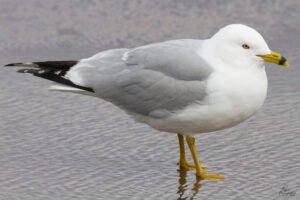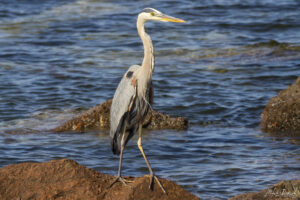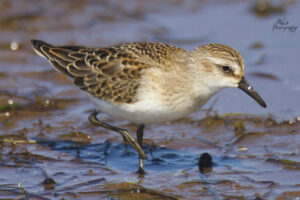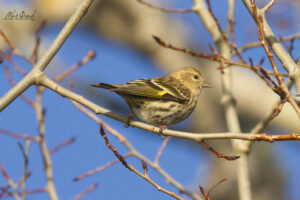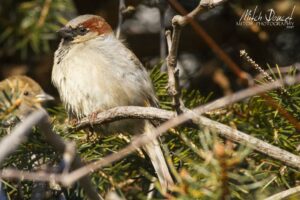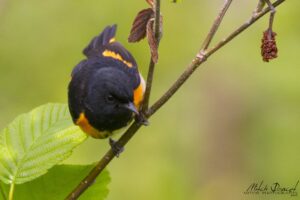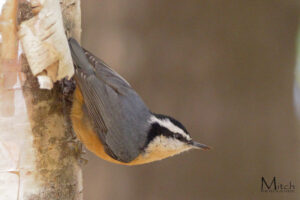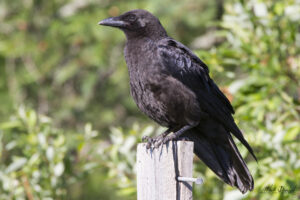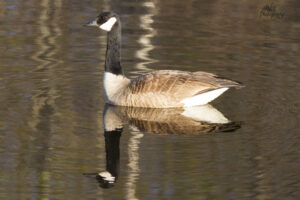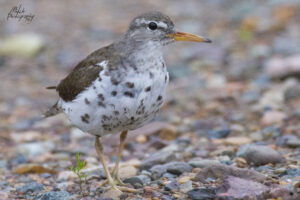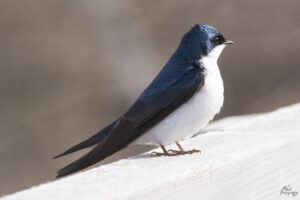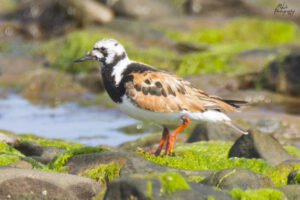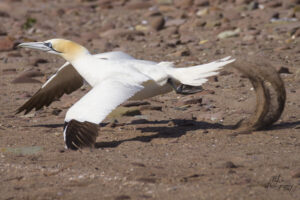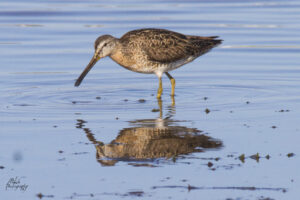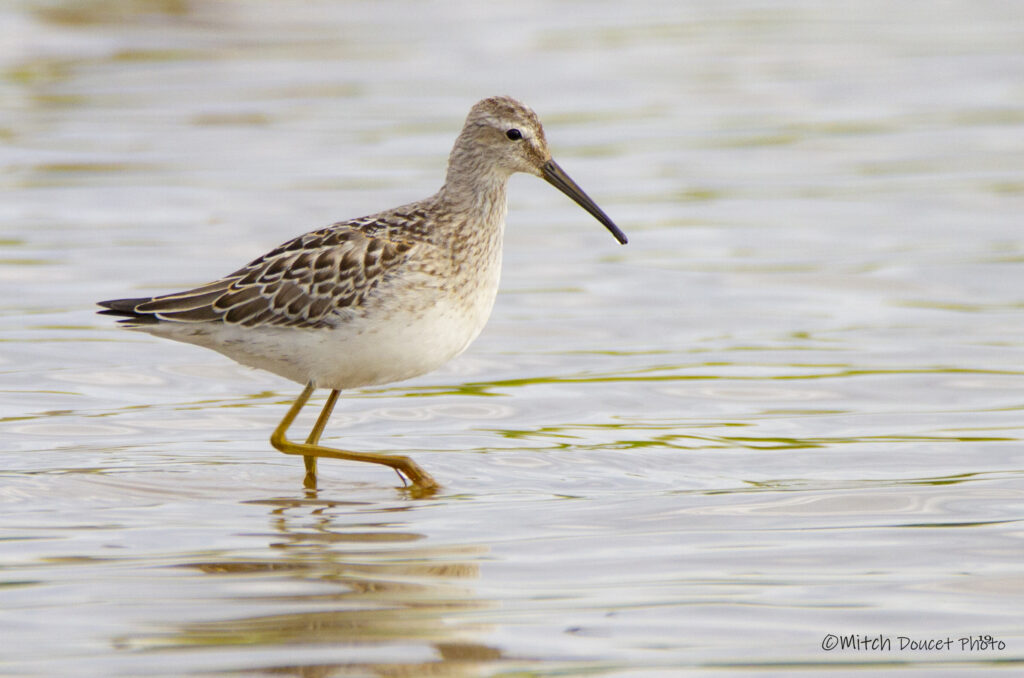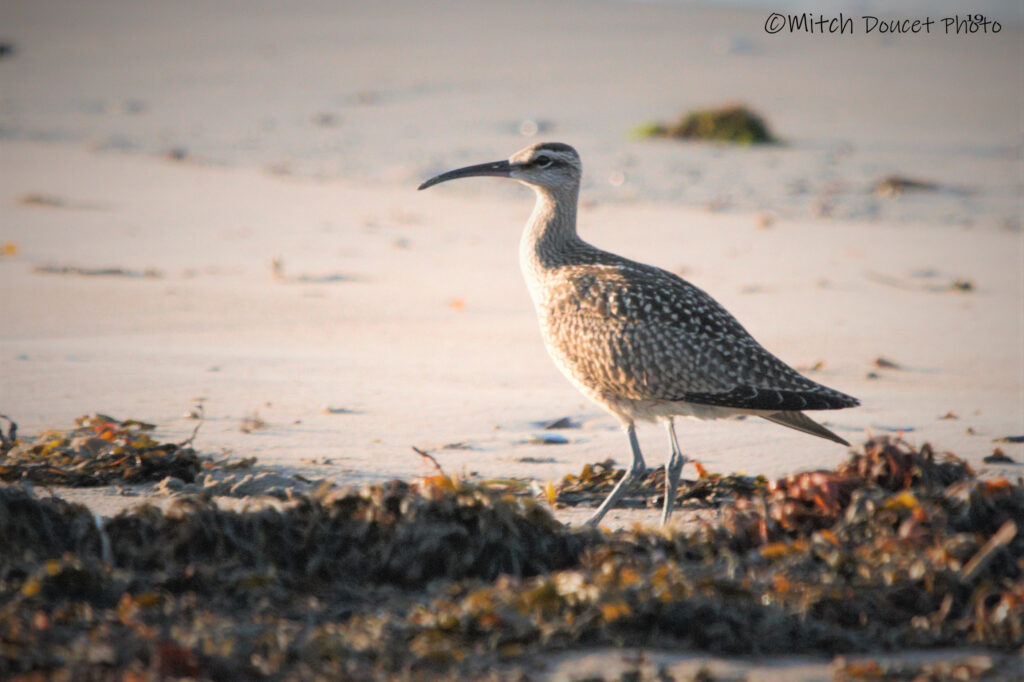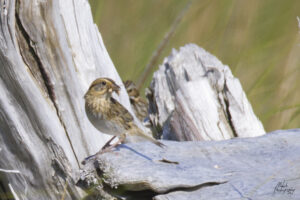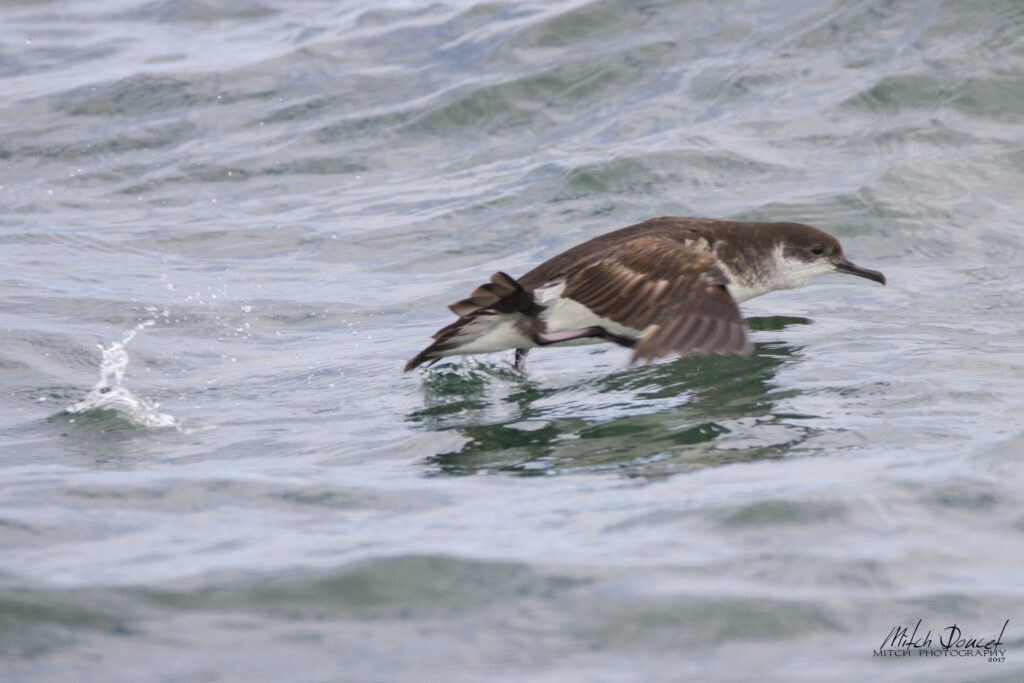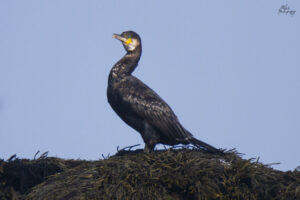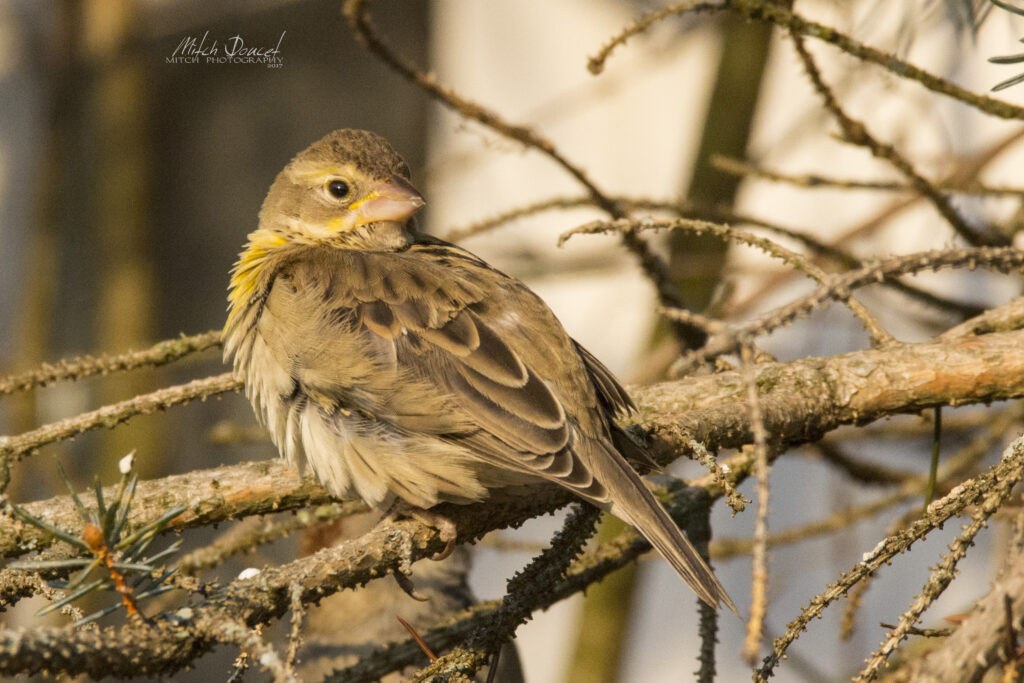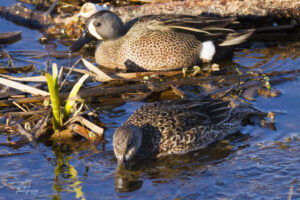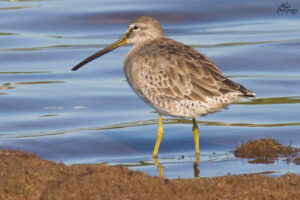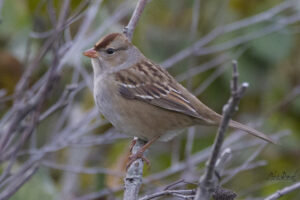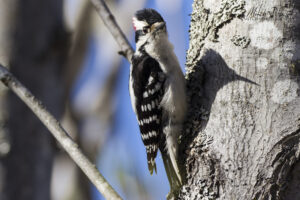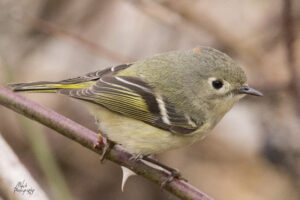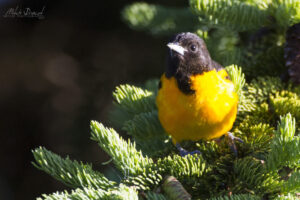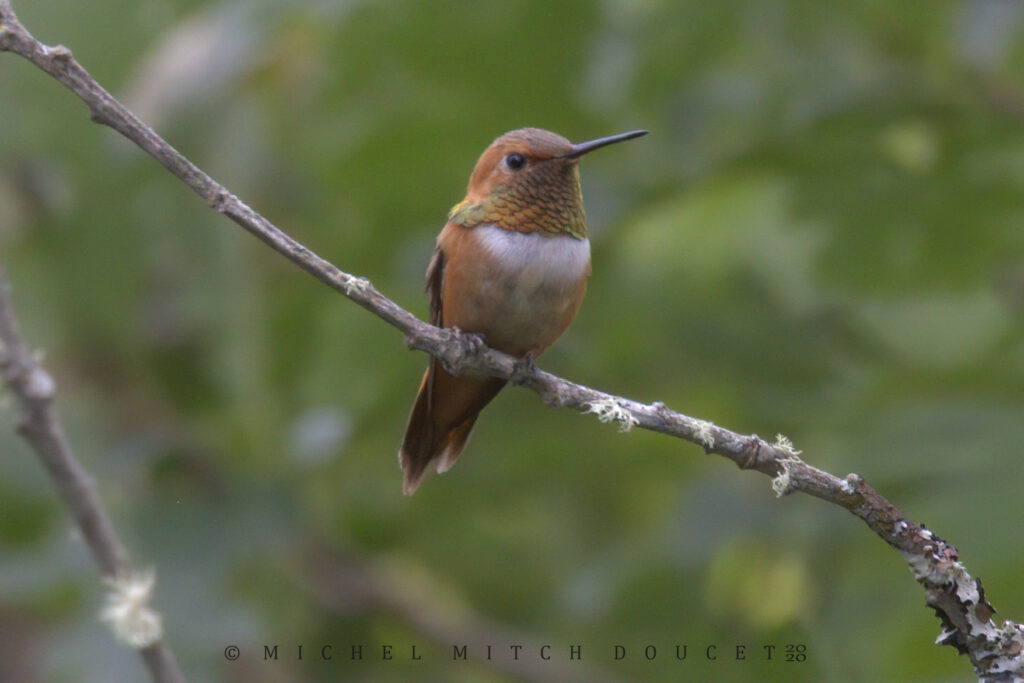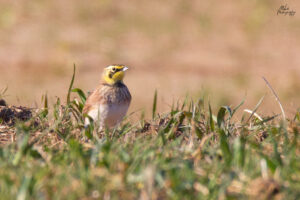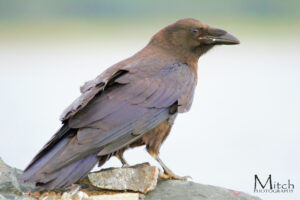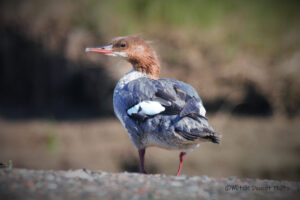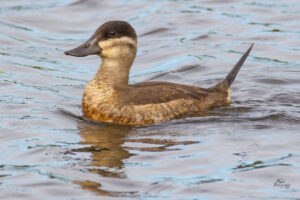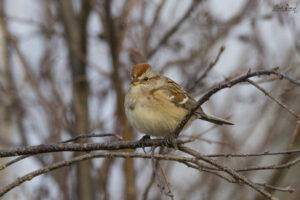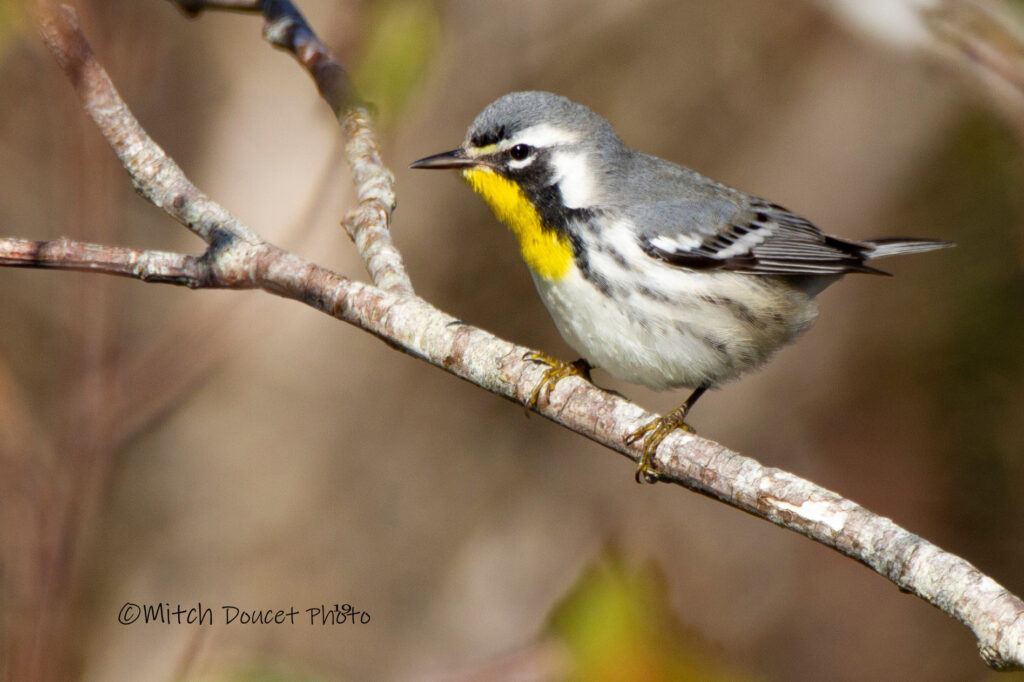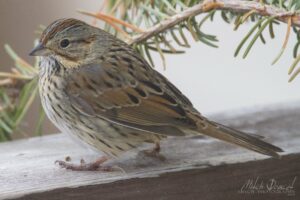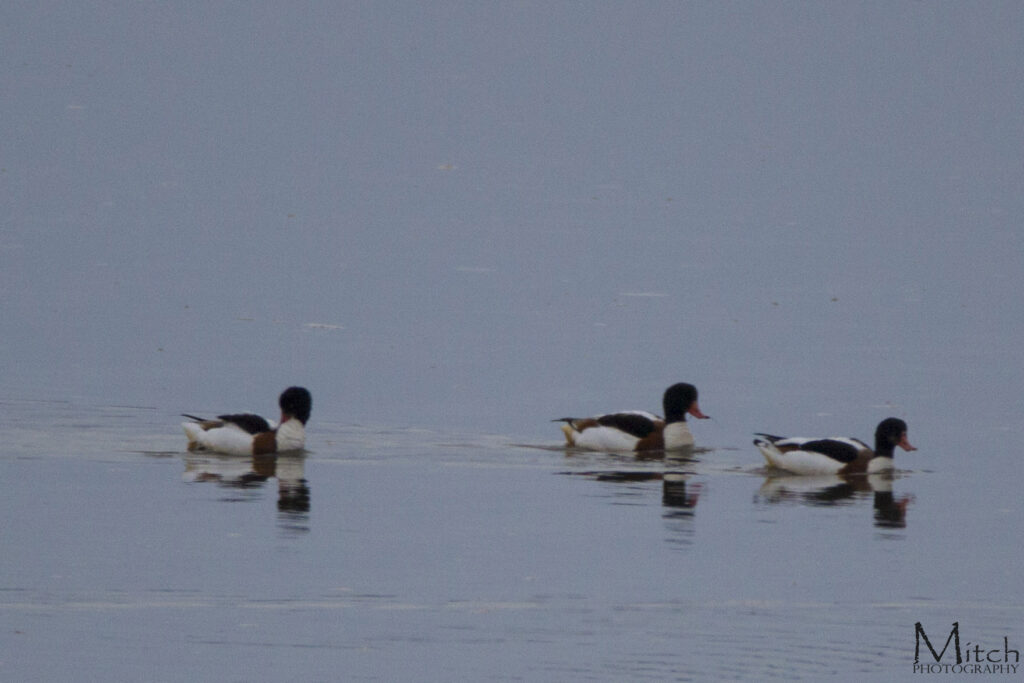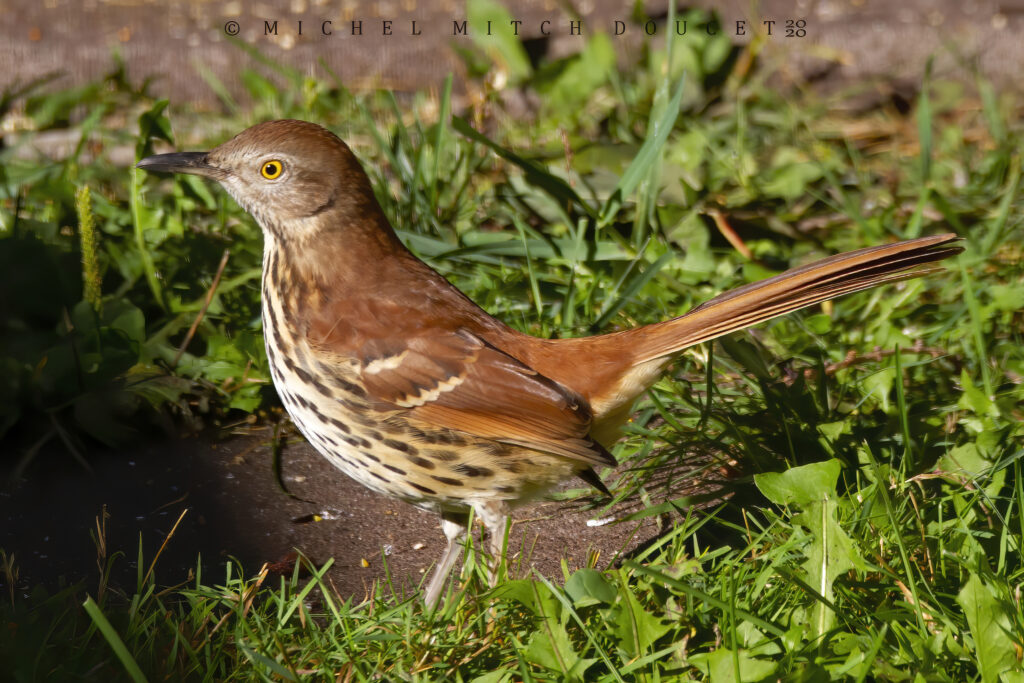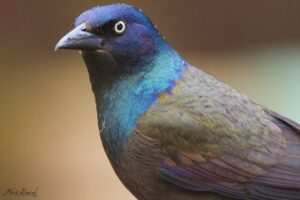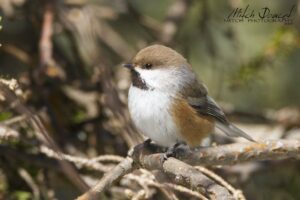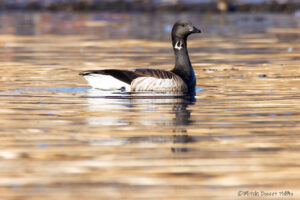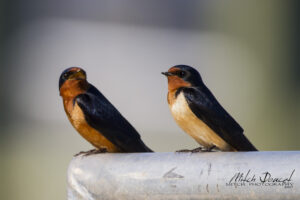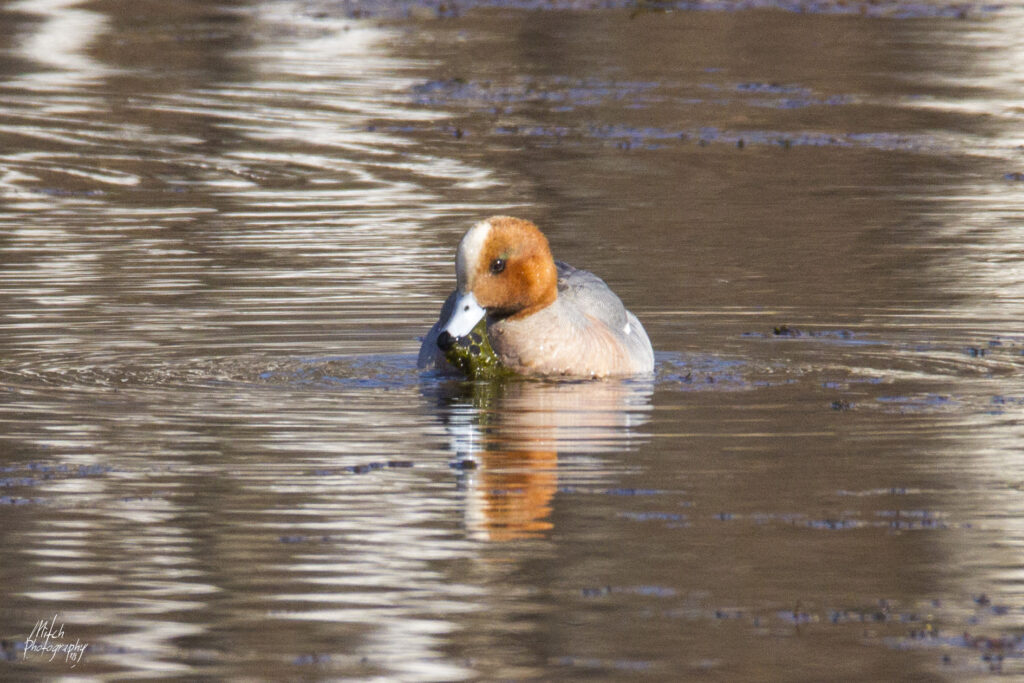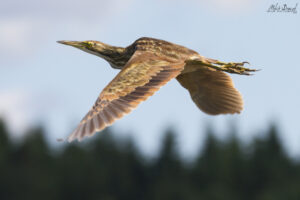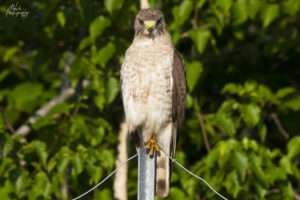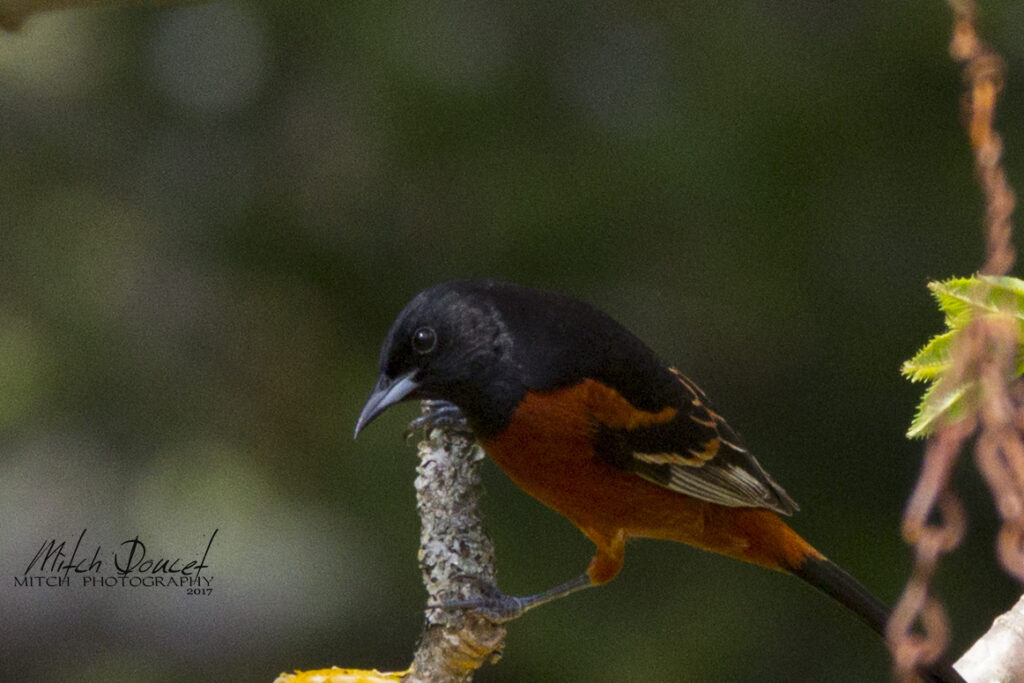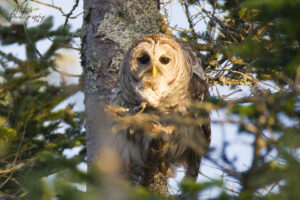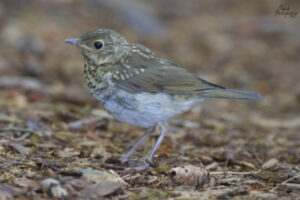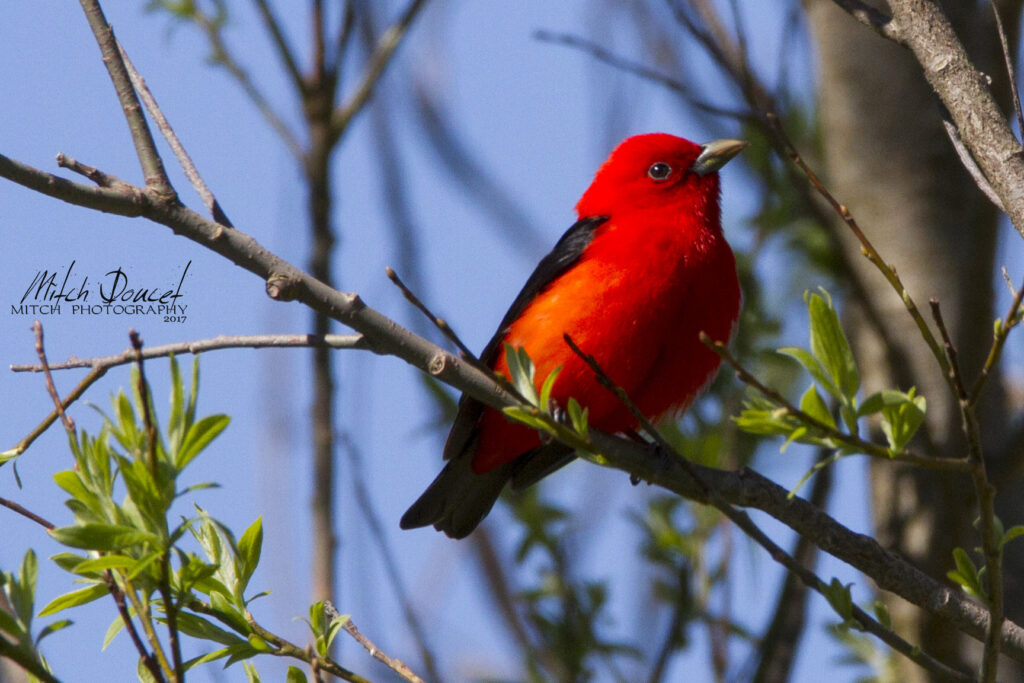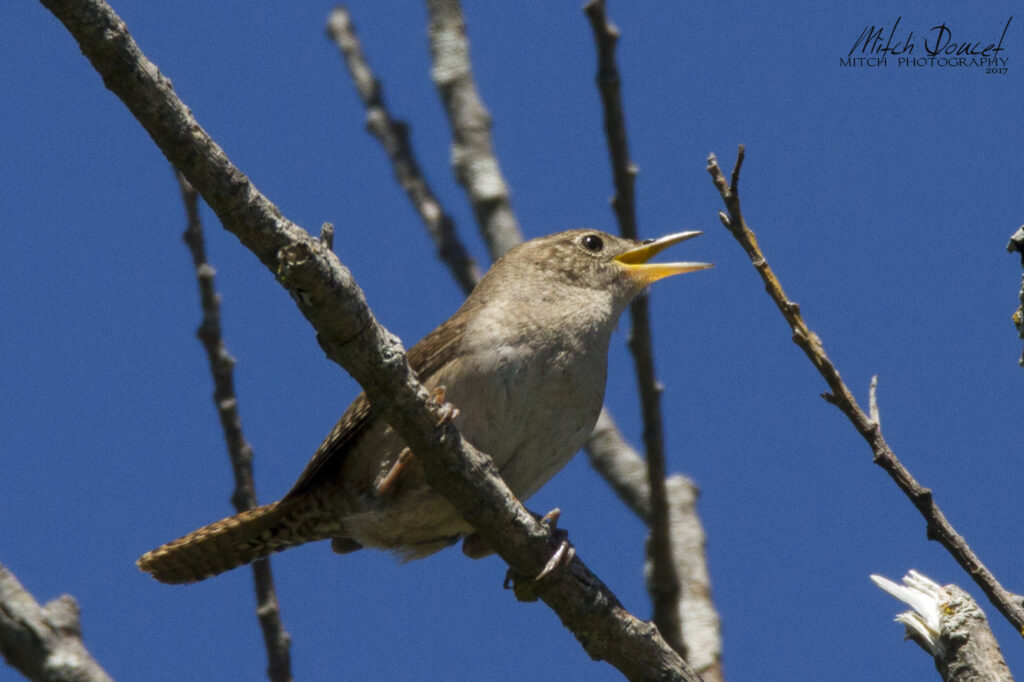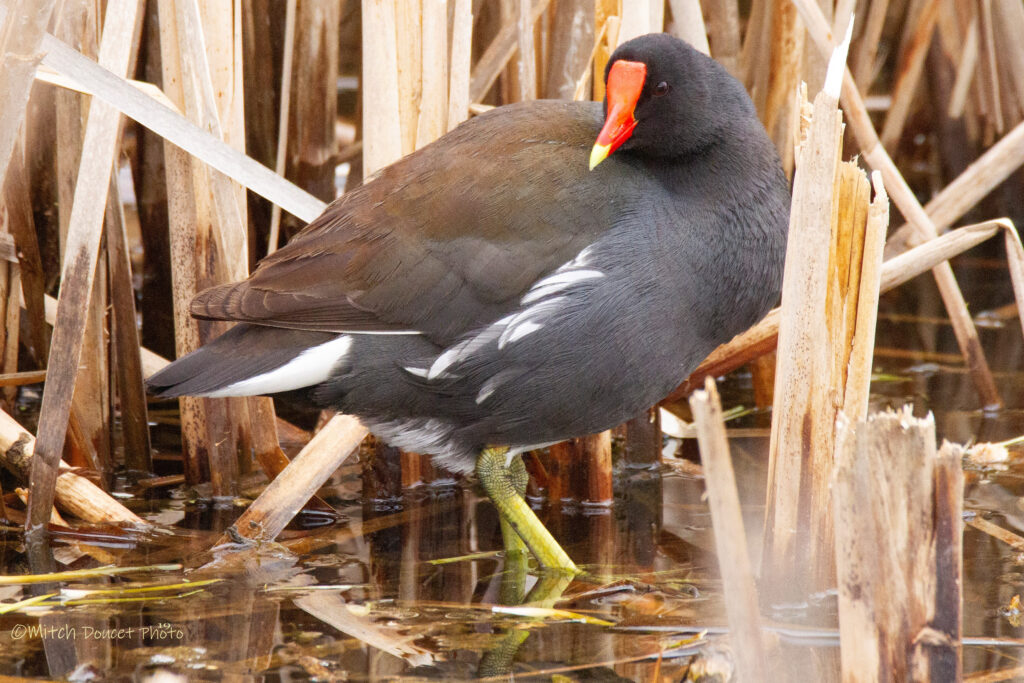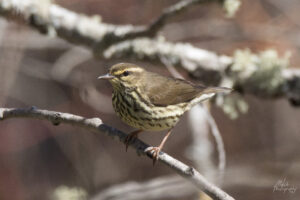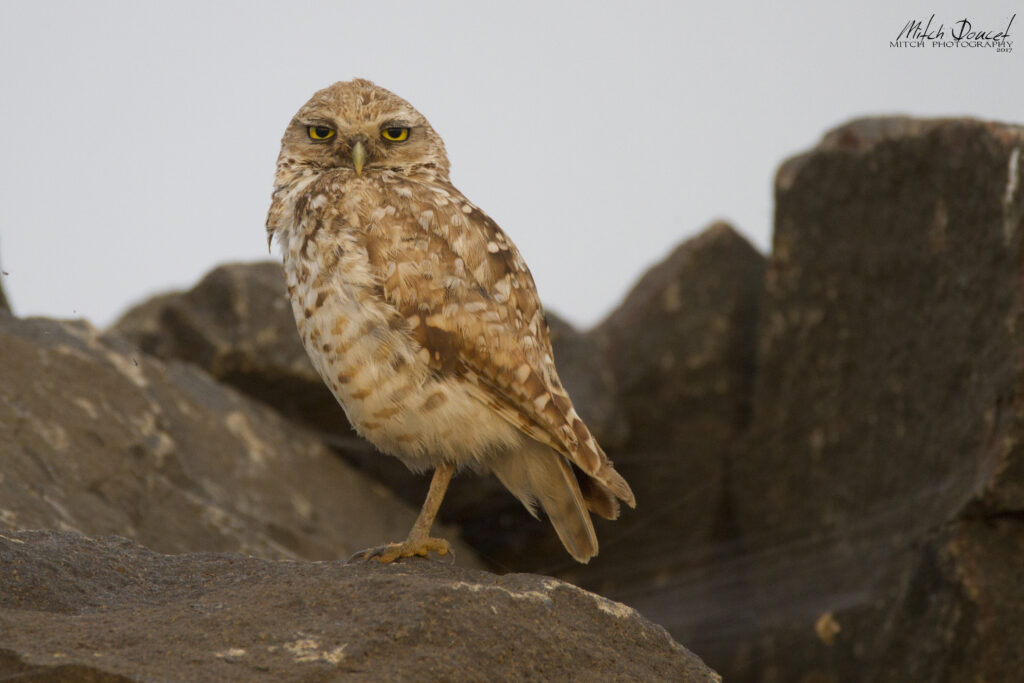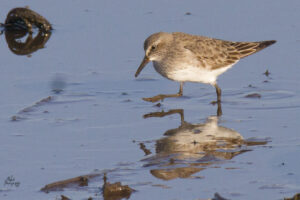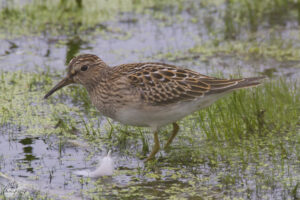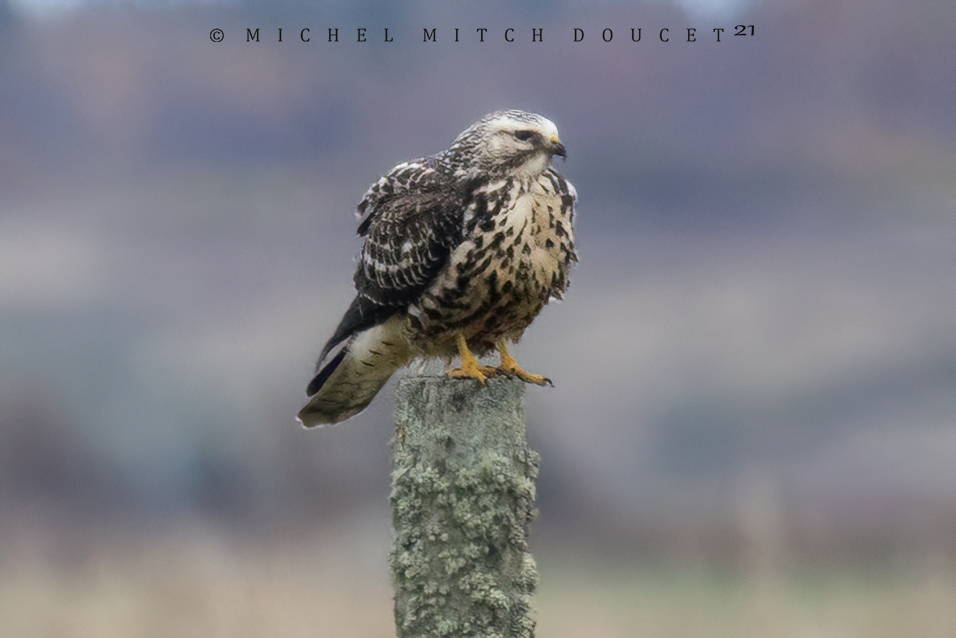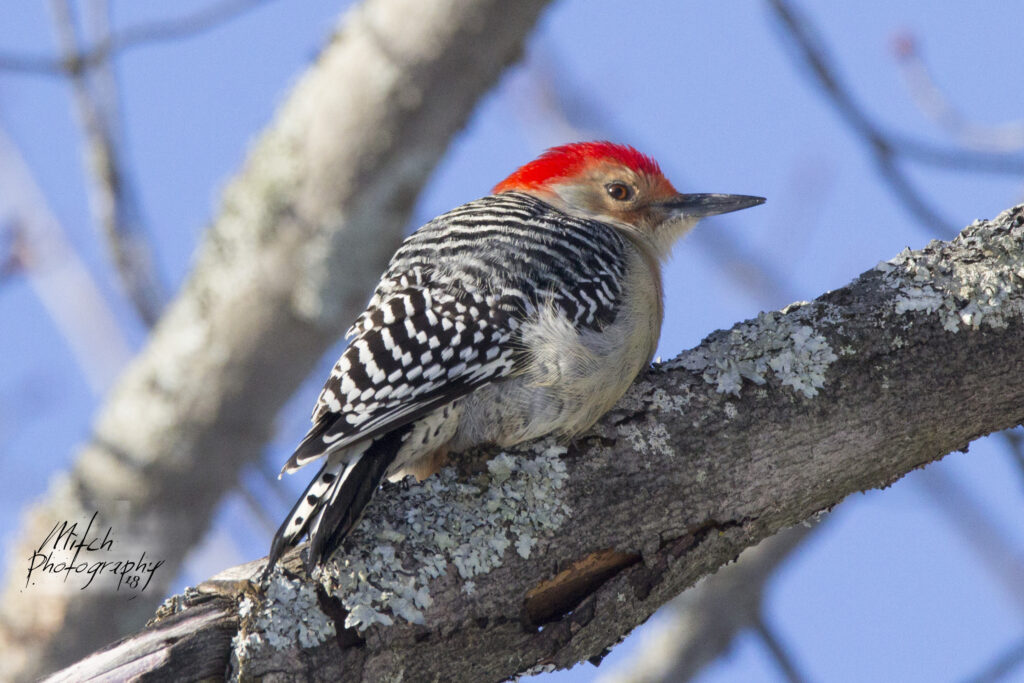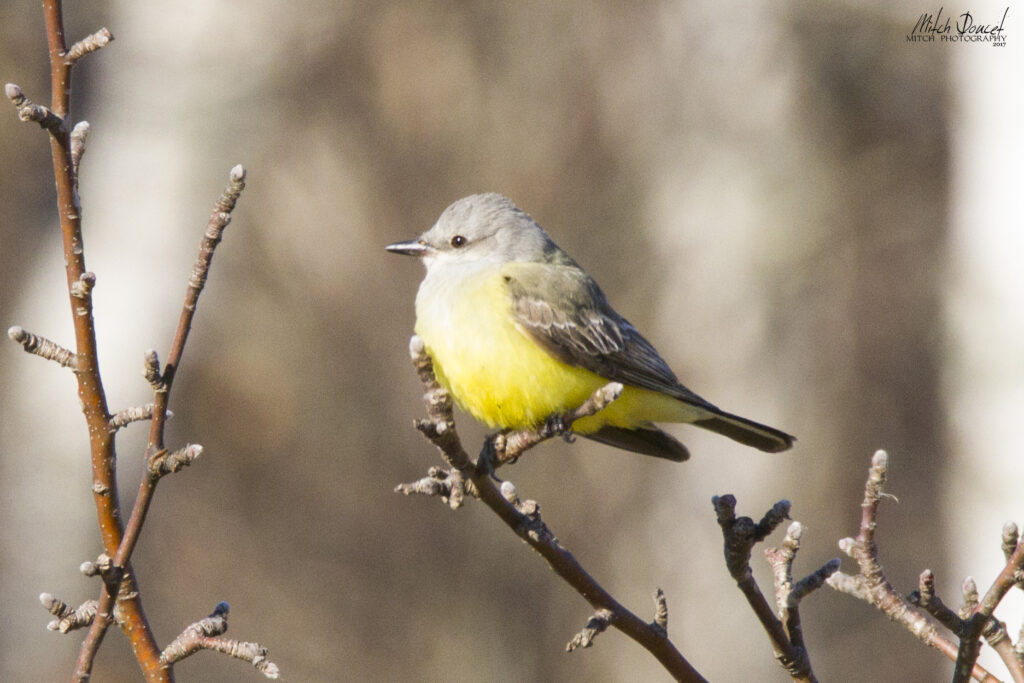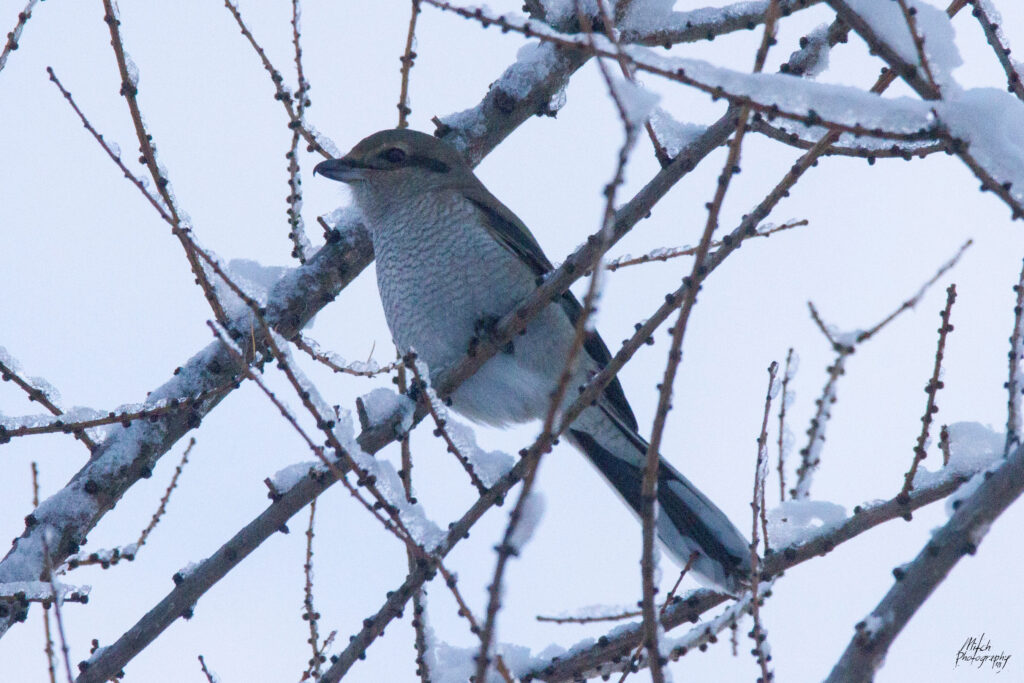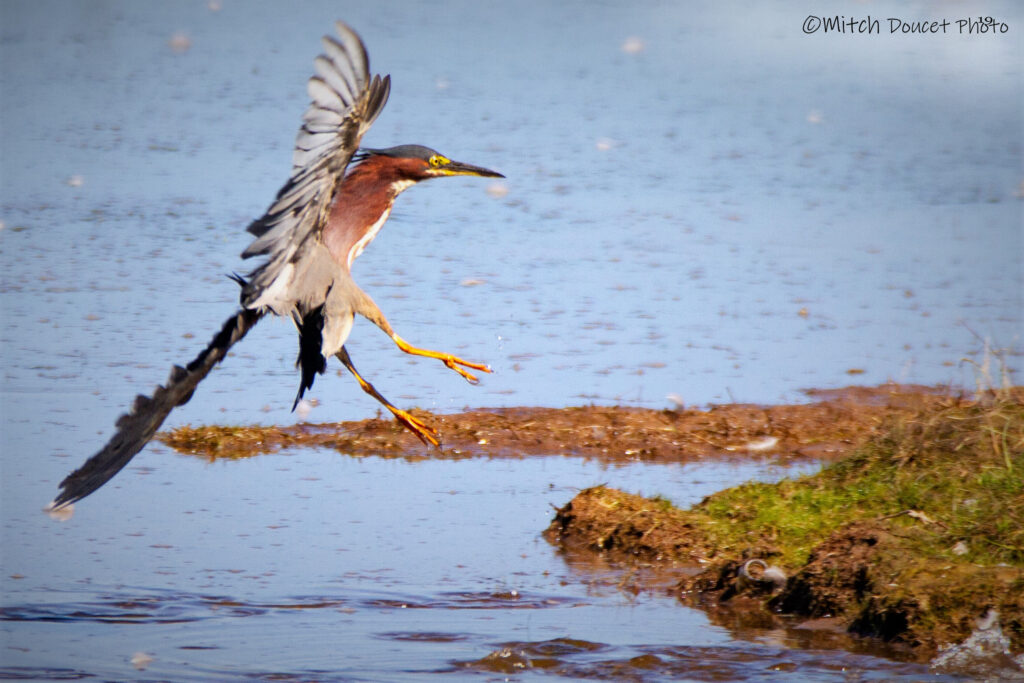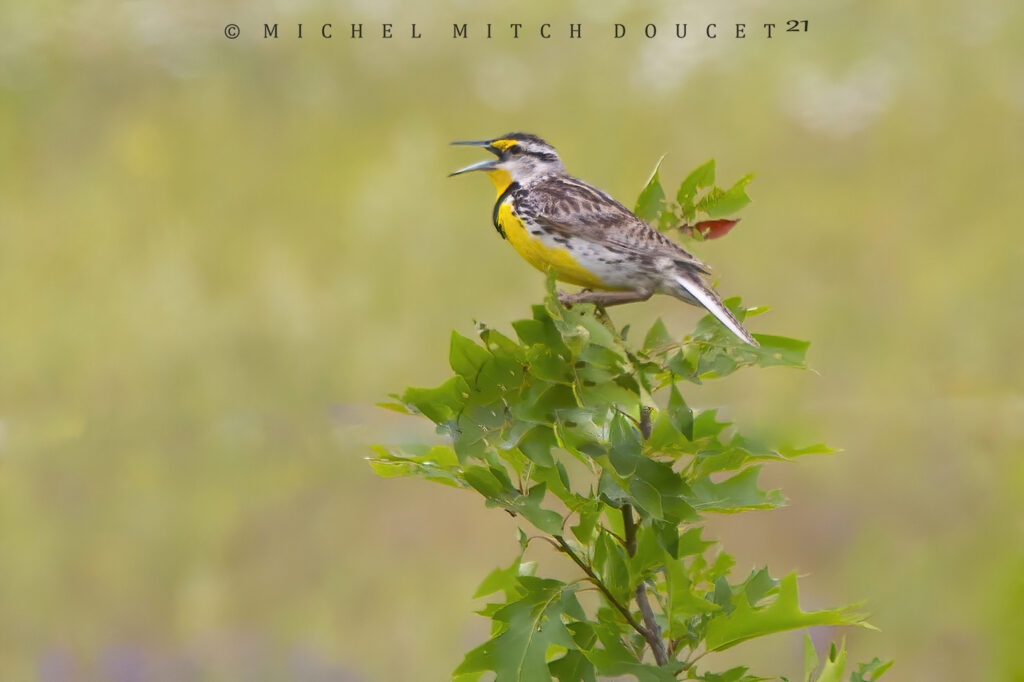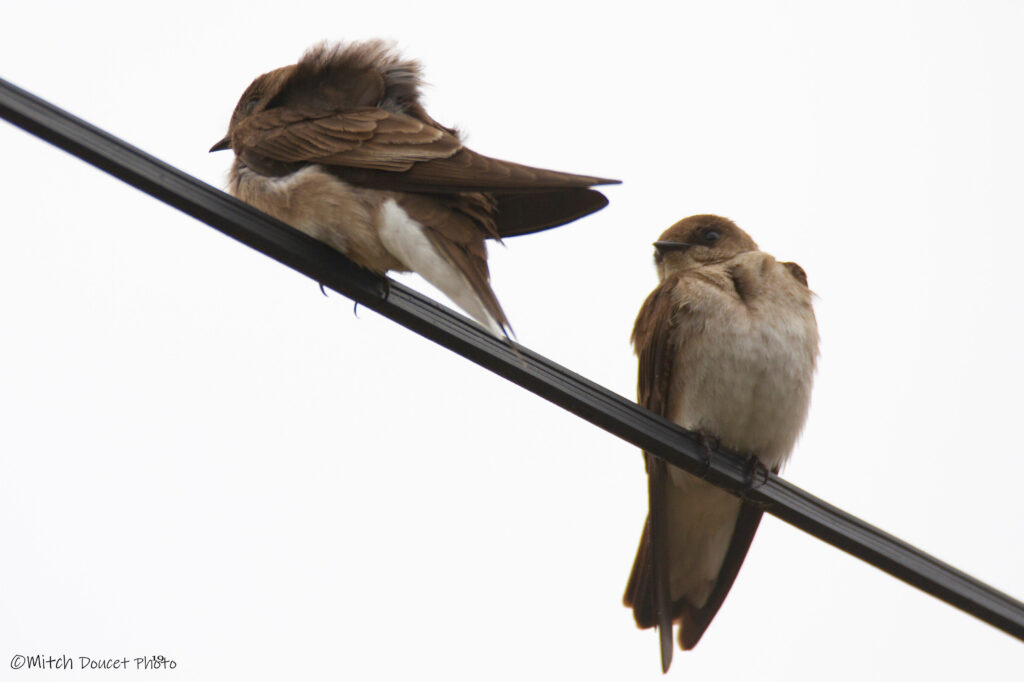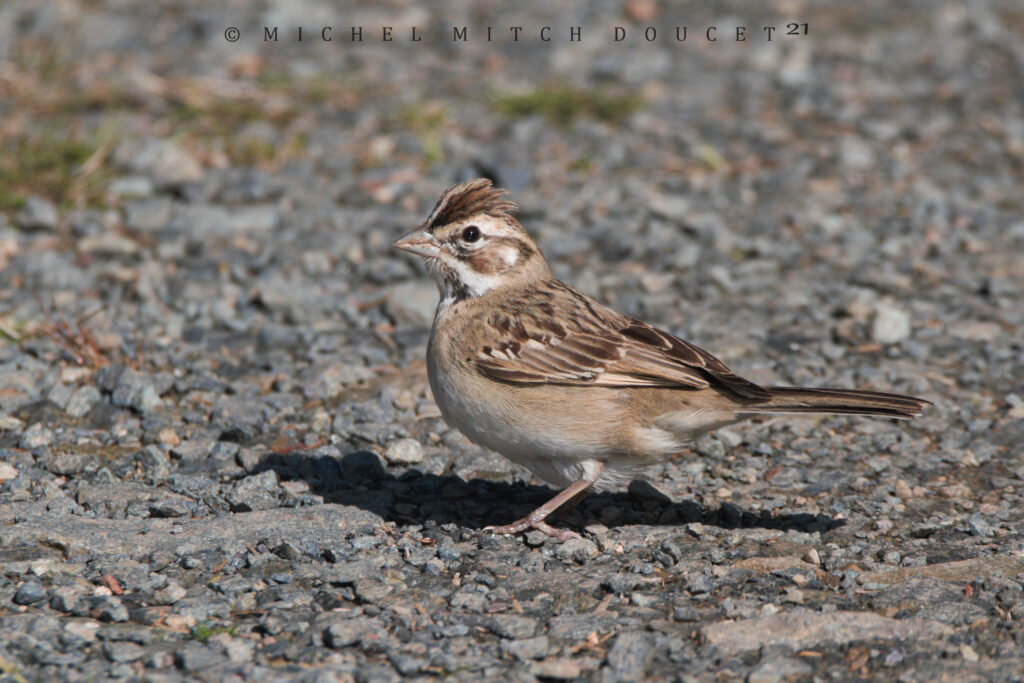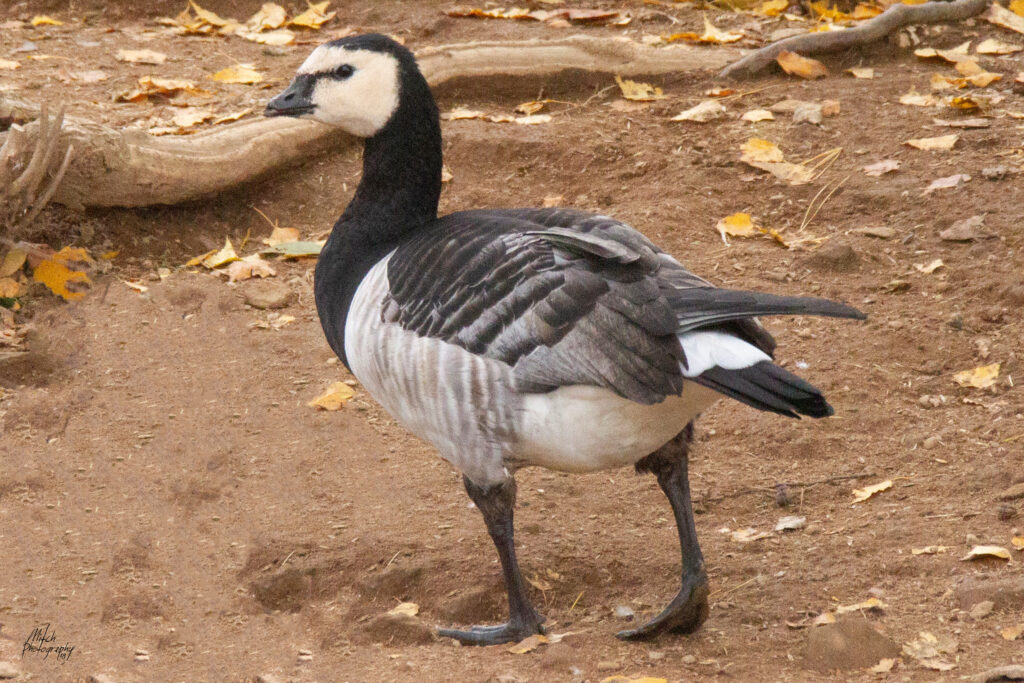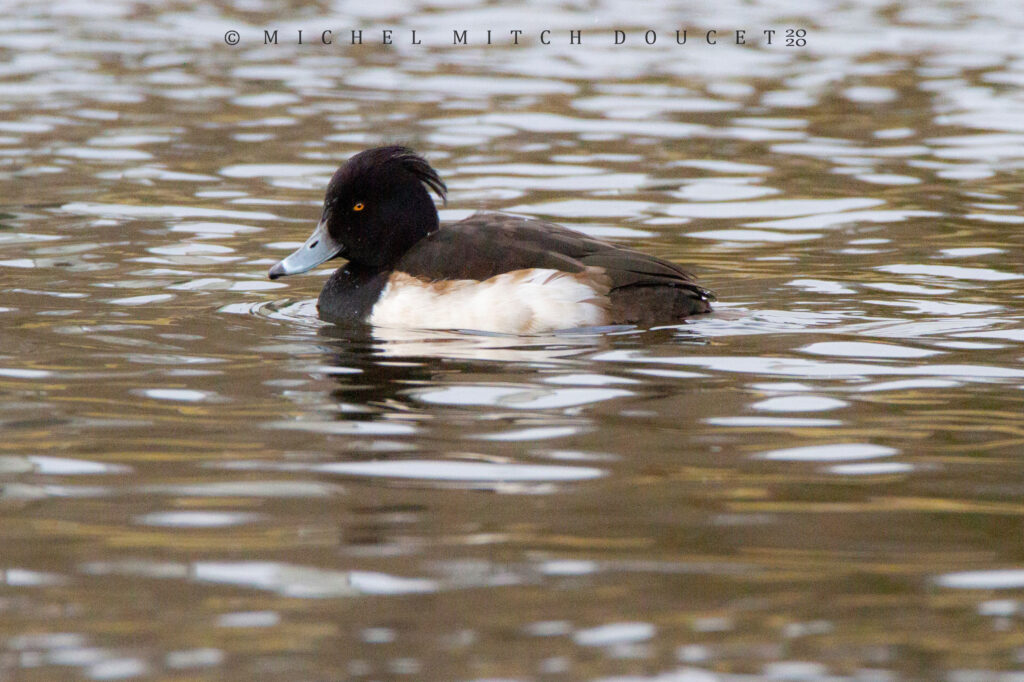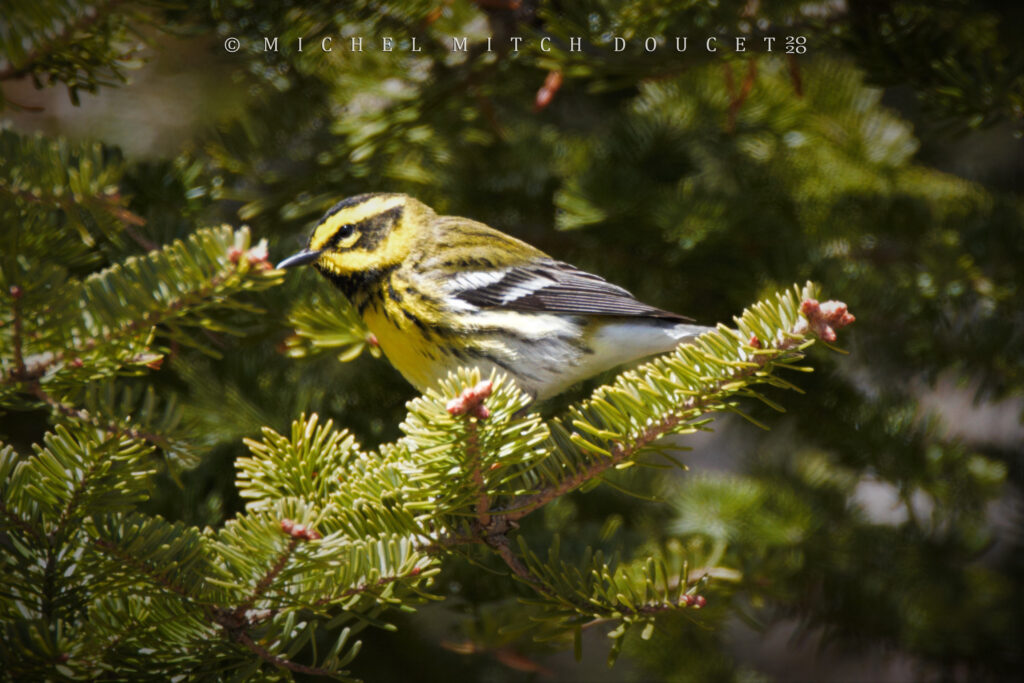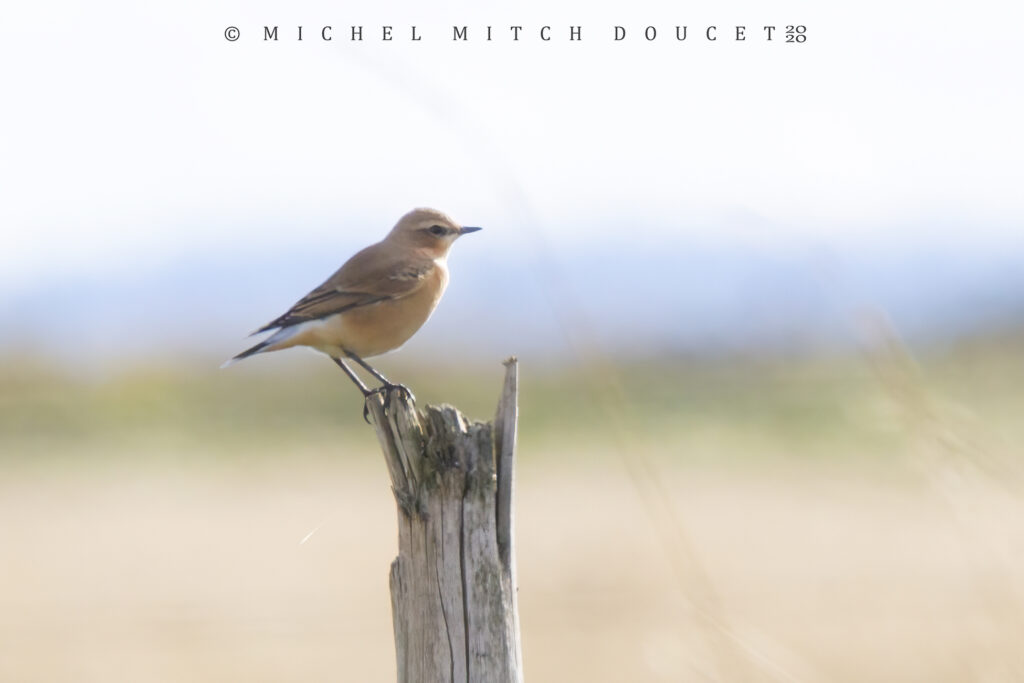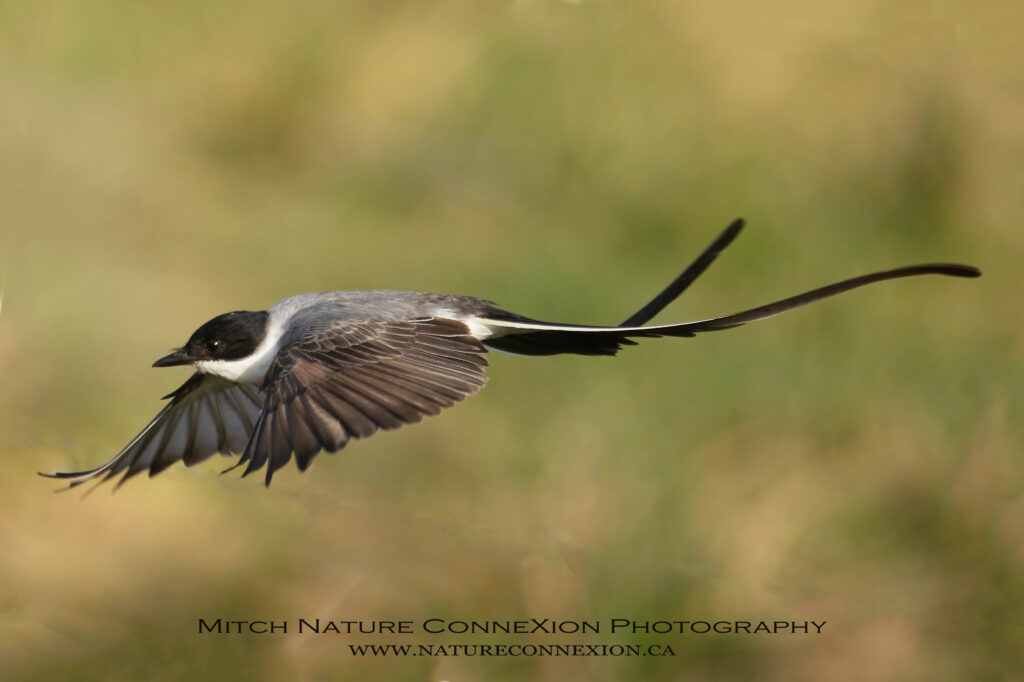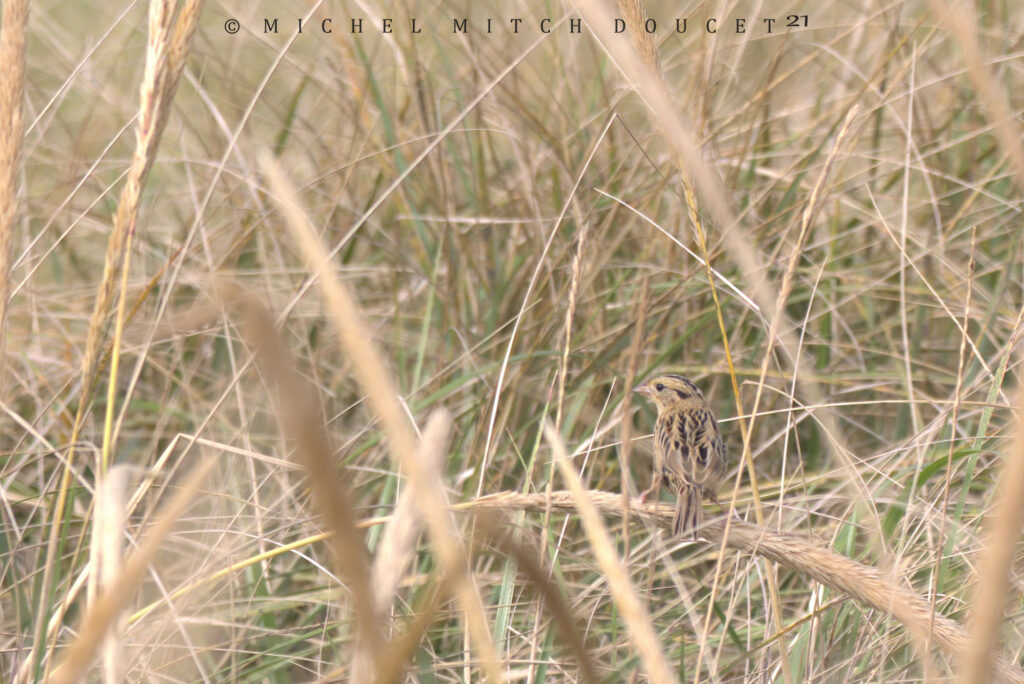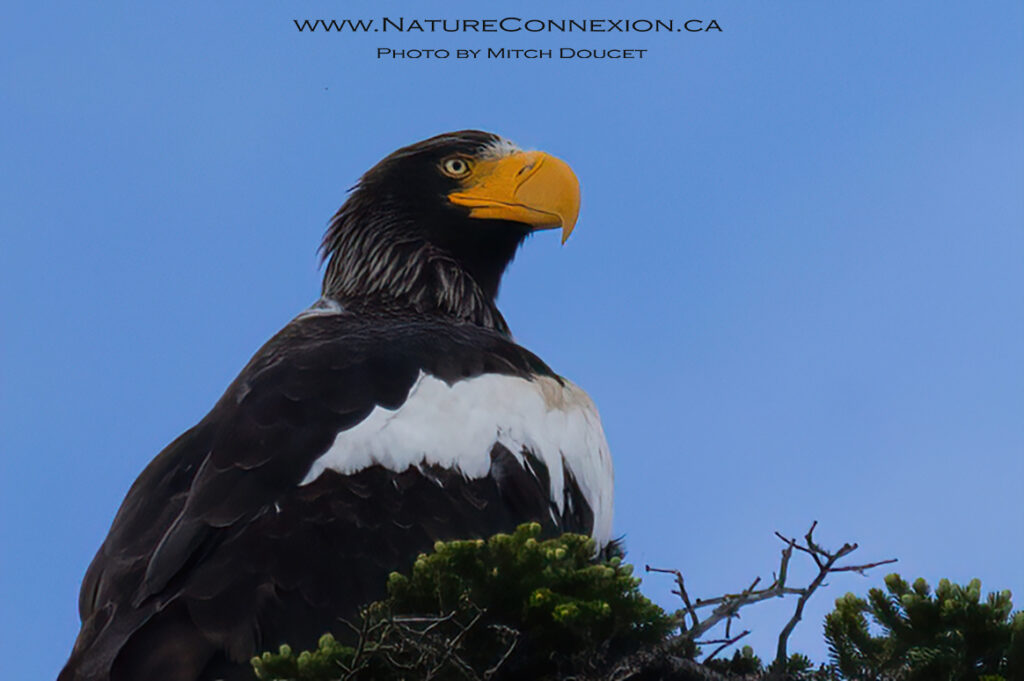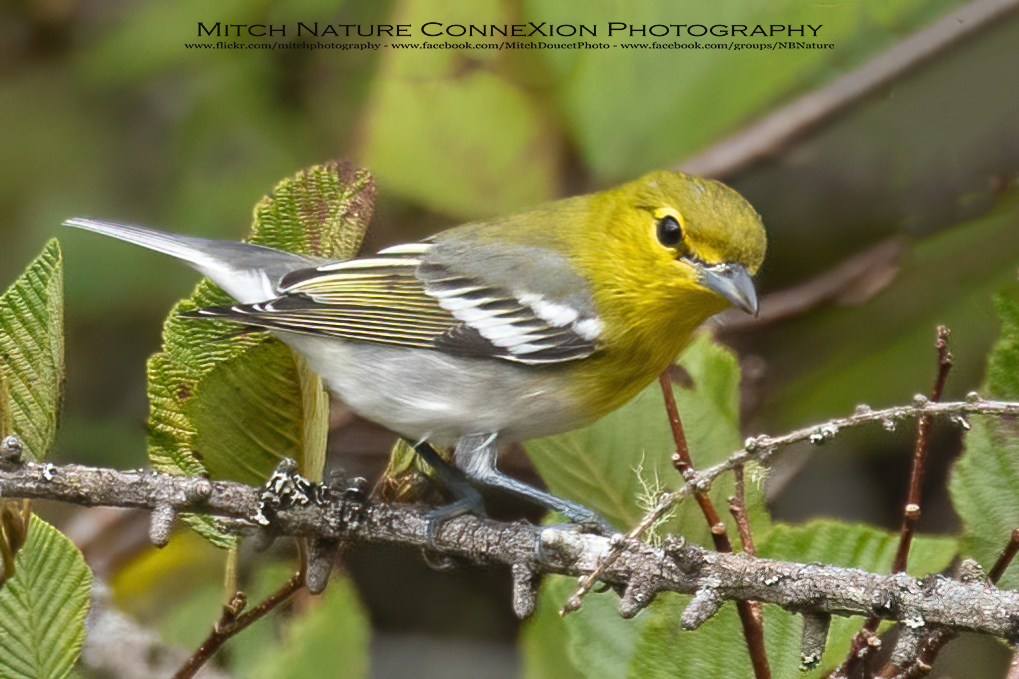Mitch Photographed Birds Species in New Brunswick (Lifers)
Please enter your comments, questions, or feedback below, Thank you!
We started birding seriously in 2016 and never stopped, it has become our main hobby and passion.
Here are the birds we have observed in the province of New Brunswick so far.
Disclaimer: Some of our comments were extracted from other sources like Sibley.
#1 – Short-eared Owl
A lifetime experience with goosebumps of sharing a sunset with this magnificent bird while looking into each other’s eyes, got me hooked for life in the search for similar experiences.

#2 – Northern Harrier
Usually seen flying just above vegetation over open fields, grasslands, or marshes.
#3 Greater Yellowlegs
Common in any shallow-water or mudflat habitat.
#4 Killdeer
Common and widespread on any open ground.
#5 – Ring-billed Gull
Common and 1 of our most widely seen gulls. Found in all bodies of water from small lakes and rivers to oceans.
#6 Common Eider
Locally common on open ocean and saltwater bays along northern coasts.
#7 Herring Gull
Common along the coast, large bodies of water, and even inland in parking lots or open fields.
#8 – Double-crested Cormorant
Nests on islands or in dead trees standing in water.
#9 Great Black-backed Gull
Common along the Atlantic coast, especially ocean shores around inlets and rocky headlands.
#10 Black-capped Chickadee
Our provincial bird, all year long resident, can be found anywhere inland.
#11 – American Goldfinch
Common and widespread everywhere in the province, often seen in flocks..
#12 Chipping Sparrow
Common in the summer in open woodlands and edges.
#13 Bonaparte’s Gull
Common locally on lakes, rivers, and oceans, especially where strong currents stir the water.
#14 – Great Blue Heron
Common and will footage in any open grassy to shallow water habitat.
#15 Hooded Merganser
Uncommon, nests in tree cavities near ponds, rivers, and wooded swamps.
#16 Song Sparrow
Common and widespread, in most areas the most frequently seen sparrow.
#17 – Red-breasted Merganser
Common and will footage in any open grassy to shallow water habitat.
#18 – American Wigeon
Uncommon, nests in tree cavities near ponds, rivers, and wooded swamps.
#19 – Eastern Kingbird
Common and widespread, in most areas the most frequently seen sparrow.
#20 – Lesser Yellowlegs
Habitat similar to Greater Yellowlegs, but may prefer slightly shallower mare grassy and less open sites.
#21 – Common Tern
Common along ocean beaches and lagoons. Nests in large colonies.
#22 – Least Sandpiper
Common and found on virtually any bit of exposed mud or grassy mudflat.
#23 – Semipalmated Sandpiper
Common and in large groups during fall migration.
#24 – Common Murre
Common at nesting colonies on rocky cliffs rising out of the ocean.
#25 – Razorbill
Nests in crevices on cliffs or among boulders on small rocky islands with other alcids.
#26 – Atlantic Puffin
Common in nesting colonies in Canada, nests in burrows or in deep crevices among boulders.
#27 – Arctic Tern
Nests in colonies on small islands, often mixed with Common Tern in similar habitats.
#28 – Wood Duck
Found in sheltered ponds, rivers, swamps, or wherever there is standing water among trees.
#29 – Ruby-throated Hummingbird
Common in wooded areas and edges of woods, especially at flowers or feeders.
#30 – Eastern Phoebe
Fairly common in open woods and woodland edges.
#31 – Magnolia Warbler
Common in coniferous forests, especially dense, second-growth stands.
#32 – Northern Cardinal
Found in brushy understory or forest edges, hedgerows, and dense thickets.
#33 – Purple Finch
Found in a variety of wooded areas, especially in low shrubs on the margins of clearings.
#34 – Pine Siskin
Nomadic, numbers vary from year to year at any given location.
#35 – House Sparrow
Introduced from Europe in the mid-1800s. Can be found in cities, towns, parking lots, and farms.
#36 – American Redstart
Common in deciduous forests with an understory of small trees.
#37 – Red-breasted Nuthatch
Common in coniferous and mixed woods.
#38 – Yellow Warbler
Common in any wet brushy habitat, such as willow thickets.
#39 – Semipalmated Plover
Common on open mudflats and beaches.
#40 – Osprey
Common around saltwater baus and estuaries.
#41 – Savannah Sparrow
Common in grassy or weedy habitats, including marshes.
#42 – Downy Woodpecker
Common in wooded habitats, especially riparian and deciduous woods.
#43 – Mallard
Common on sheltered shallow water from coastal lagoons to city parks.
#44 – Belted Kingfisher
Found around sheltered open water with small fish.
#45 – Pied-billed Grebe
Nests in shallow ponds and marshes with emergent vegetation.
#46 – American Crow
Usually in small groups in all open habitats from beaches, and farmland to suburbs.
#47 – European Starling
Introduced from Europe to New York in the late 1800s, now found everywhere in North America..
#48 – Turkey Vulture
Most often seen in flight. Feeds on carrion found on the ground.
#49 – Red-winged Blackbird
Nests and roosts in wet, marshy, or brushy habitats.
#50 – Canada Goose
Very Common, found on or near any body of water from urban parks to tundra wetlands.
#51 – Spotted Sandpiper
Found on ponds and streams, particularly on rocky shores and steep banks.
#52 – Cedar Waxwing
Found in any wooded or brushy habitat where fruit or other food is found.
#53 – Sora
Very Common, found on or near any body of water from urban parks to tundra wetlands.
#54 – Northern Shoveler
Found on ponds and streams, particularly on rocky shores and steep banks.
#55 – Common Yellowthroat
Found in any wooded or brushy habitat where fruit or other food is found.
#56 – White-throated Sparrow
Found in brushy patches in or near openings in mixed woods.
#57 – American Kestrel
Found in open habitats from desert grasslands to meadows to brushy fields.
#58 – Merlin
Nests in trees in forests with open areas. Often harasses much larger birds.
#59 – Tree Swallow
Nests singly in birdhouses or tree cavities in open fields or over water.
#60 – Bald Eagle
Usually found near water, ocean bays, lakes, and rivers.
#61 – Rock Pigeon
Introduced from Europe and escaped from domestication to become one of the most familiar birds in NA.
#62 – Cliff Swallow
Nests mostly on manmade structures such as under bridges or house eaves.
#63 – Common Loon
Nests on deep clear forest lakes large enough to provide fish for the family.
#64 – American Black Duck
Common on the Atlantic coast salt marshes.
#65 – Great Egret
Forages in shallow water with or without emergent vegetation, sometimes in grassy fields.
#66 – Ruddy Turnstone
Uses short upturned bull to flop over rocks and debris in search of food.
#67 – Sanderling
Found along sandy beaches with some wave action.
#68 – Bank Swallow
Nests in colonies, excavating tunnels into vertical sandbanks.
#69 – Palm Warbler
Nests in open bogs with a border of spruce or other trees.
#70 – Solitary Sandpiper
Found especially at the edges of small brushy ponds or ditches.
#71 – Gray Catbird
Common in the brushy understory of woods, often in damp shaded areas.
#72 – Common Goldeneye
Nests in tree cavities around shallow marshy lakes or beaver ponds.
#73 – Common Nighthawk
Mostly active at night, but often seen flying in daylight.
#74 – Black-crowned Night-Heron
Forages mainly at twilight and at night in shallow water.
#75 – Northern Flicker
Unlike other woodpeckers, this species forages largely on the ground.
#76 – Eastern Wood-Pewee
Forages for small flying insects from conspicuous perch.
#77 – Black-and-White Warbler
Nests in mature deciduous or mixed forests with large tree trunks.
#78 – Nashville Warbler
Breeds in open coniferous woodlands with patches of brush.
#79 – Northern Parula
Common in mature woods near water. Nests in hanging moss.
#80 – Northern Gannet
Nests in a few colonies on seaside cliff tops in Canada.
#81 – Short-billed Dowitcher
Forages in shallow muddy pools, usually forming tight flocks all with heads down busily probing in mud.
#82 – Yellow-rumped Warbler
Common in many areas and the only warbler likely to be seen in the winter.
#83 – Blue Jay
Travels through woods in small groups or pairs. Feeds on a variety of insects as well as acorns and other seeds.
#84 – Stilt Sandpiper
Uncommon but found on open shallow muddy ponds such as flooded fields, salt pans, etc…
#85 – Snowy Egret
Uncommon to rare in the province, forages in open shallow water, especially pools, and salt marshes.
#86 – Whimbrel
During migration and winter found on grassy mudflats, tidal flats, beaches, and coastal rocks. .
#87 – Lesser Scaup
Favors fresh water and smaller lakes and ponds than Greater Scaup.
#88 – Black-bellied Plover
Often forms small flocks when roosting or flying.
#89 – Nelson’s Sparrow
Mostly solitary and secretive. Generally chooses wetter habitats.
#90 – Laughing Gull
Rare in our province, found mainly on sandy, saltwater beaches and marshes, often with other gulls.
#91 – White-winged Scoter
Nests on large lakes in boreal forest. Winters on open salt water, favoring sandy shorelines.
#92 – Ring-necked Duck
Nests on ponds with emergent vegetation. Winters on ponds and rivers.
#93 – Gadwall
Found in shallow fresh water and sometimes sheltered salt water.
#94 – Dark-eyed Junco
Common and widespread, Nest in relatively open mature coniferous or mixed woods.
#95 – Golden-crowned Kinglet
Common in mature trees, usually high in spruces and other conifers.
#96 – Black-throated Blue Warbler
Nearly always found in the shady understory of woodlands.
#97 – Ring-necked Pheasant
Widely introduced and locally common but declining in many areas.
#98 – Black Guillemot
Common along rocky shorelines. Habits like Pigeon Guillemot.
#99 – Cape May Warbler
Most numerous where spruce budworms are abundant.
#100 – Peregrine Falcon
Nests on cliff ledges or on buildings or bridges in cities.
#101 – Red-necked Phalarope
Forages by picking insect larvae and other tiny prey from the water surface.
#102 – Red Phalarope
Nests in grass near high-artic tundra ponds and migrates in small flocks in the winter.
#103 – Great Skua
Rare visitor in our water, nests in Iceland and Europe. Solitary, feeds mainly on fish often stolen from other seabirds.
#104 – Black-legged Kittiwake
Almost exclusively seen on open salt water. Nest in large colonies.
#105 – Lesser Black-backed Gull
Rare but increasing winter visitors from Europe.
#106 – Wilson Storm-Petrel
A common visitor to the North Atlantic from nesting grounds in sub-Antarctic.
#107 – Leach’s Storm-Petrel
Nests in burrows or crevices on islands, visit the nest only at night. They are found nesting on nearby Kent Island in the Bay of Fundy.
#108 – Northern Fulmar
Uncommon and found on the open ocean, usually in cold water. Nests on narrow ledges on sea cliffs.
#109 – Cory’s Shearwater
Found in warmer open ocean waters; visiting from nesting grounds in the eastern Atlantic and Mediterranean. Often solitary, but gathers where food is abundant.
#110 – Great Shearwater
Common visitors from nesting grounds in the South Atlantic.
#111 – Sooty Shearwater
Common to Uncommon visitors from nesting grounds in the Southern Hemisphere.
#112 – Manx Shearwater
Uncommon visitors from nesting grounds in the North Atlantic to cold offshore waters.
#113 – Great Cormorant
Found along rocky coastlines. Often mixes with Double-crested.
#114 – Blackpoll Warbler
Breeds in the stunted coniferous forests on mountaintops or near tree lines.
#115 – Black-throated Green Warbler
Nests in a variety of mature coniferous and mixed woodlands.
#116 – Dickcissel
found in grassy or weedy fallow fields and tallgrass prairies with scattered shrubs, trees, or hedgerows.
#117 – American Coot
Found on shallow ponds and lakes with submerged vegetation near the surface, near stands of reeds.
#118 – Blue-winged Teal
Found in shallow marshy ponds and Mudflats.
#119 – Green-winged Teal
Found in shallow ponds, marshes, and flooded fields.
#120 – Swamp Sparrow
Found in wet marshes or at pond edges in dense vegetation.
#121 – Mourning Dove
Frequently seen on overhead wires or on the ground on road edges, lawns, and bird feeders.
#122 – Long-billed Dowitcher
Forages in shallow muddy pools. Nests on grassy tundra.
#123 – White-crowned Sparrow
Nests in brushy patches surrounded by open habitats such as tundra.
#124 – Ruffed Grouse
Found in deciduous or mixed wooded areas with a diverse mosaic of clearings.
#125 -Hairy Woodpecker
Common in mature forests, where it forages on trunks and large trees.
#126 – Hermit Thrush
Common in the brushy understory of forests, Foraging mainly on the ground.
#127 – Pine Warbler
Almost always closely associated with pine trees. Nests in pine forests.
#128 – Surf Scoter
Nests on ponds and lakes within spruce forest. Winter in open water.
#129 – Black Scoter
Nests among large tussocks of grass near tundra ponds.
#130 – Pomarine Jaeger
Nests on Arctic tundra. Winters on the open ocean and only occasionally seen from land. Feeds mostly on fish, often stolen from other seabirds.
#131 – Ruby-crowned Kinglet
Nests in tall conifers in spruce woods; at times found in low brush or deciduous woods.
#132 – Baltimore Oriol
Forages mainly in upper levels of trees, gleaning insects, and larvae form foliage. In fall and winter also eats fruits.
#133 – Brown Creeper
Generally solitary. Feeds on insects and spiders gleaned from bark. Not attracted to bird feeders.
#134 – Rufous Hummingbird
Rare in our province but increasing visitors to flower gardens and feeders in the East. Nests in open coniferous forests.
#135 – Red-tailed Hawk
In most areas, this is the default Bueto, often seen perched on trees and pools.
#136 – Horned Lark
Found in open areas with barred or only sparsely vegetated ground.
#137 – Canada Jay
Usually in areas with low trees or dense undergrowth such as around bogs.
#138 – Northern Pintail
Found on shallow ponds and marshes usually with some emergent vegetation. .
#139 – Bufflehead
Winters on open lakes, harbors, and bays.
#140 – Common Raven
Usually in pairs small groups, rarely mixes with crows.
#141 – American Golden Plover
Slightly smaller than a Black-bellied Plover, with relatively small head and bill. .
#142 – Red-throated Loon
Nests on relatively small and shallow tundra ponds.
#143 – Long-tailed Duck
Common locally on shallow open ocean especially along sandy shorelines.
#144 – Snow Bunting
Nests on high-Arctic tundra. Usually seen in large flocks.
#145 – Common Merganser
Found in clear lakes and rivers, rarely on salt water.
#146 – Ruddy Duck
Found on open water of ponds, lakes lagoons.
#147 – American Tree Sparrow
Nests in open shrubby vegetation on tundra.
#148 – Barrow’s Goldeneye
Winters on open rivers, lakes, and bays, usually mixed with Common.
#149 – Dunlin
Nests on moist to wet tundra with grassy tussocks.
#150 – Harlequin Duck
Uncommon but reliably present in favored locations. Nests along fast-flowing rocky rivers. Winters in small groups on salt water, along rocky shorelines with strong wave action.
#151 – Glaucous Gull
Common in northern and western Alaska, uncommon to rare elsewhere.
#152 – White-breasted Nuthatch
Feeds on insects and seeds gleaned from bark.
#153 – Purple Sandpiper
Found almost exclusively on wave-washed rocks.
#154 – Pink-footed Goose
Very rare, nesting in Greenland to northeastern states. Most records are of single birds, but pairs and family groups have also been found.
#155 – Rough-legged Hawk
Look for it perched on fenceposts or isolated trees in open areas.
#156 – Bohemian Waxwing
Nests in spruce forest; winters in flocks that wander widely in search of fruits.
#157 – Iceland Gull
Nests in the Arctic but common locally in the winter along the coast.
#158 – Yellow-throated Warbler
Rare to our province, often forages for insects upside-down, peering under large limbs, and grequently searches under the eaves of buldings for insects and spiders.
159 – Greater Scaup
Nests on ponds and lakes and favor salt water and larger lakes.
#160 – Red-necked Grebe
Winters on open water on larger lakes or open ocean.
#161 – Lincoln Sparrow
Nests in damp, dense brushy areas in sunny clearings.
#162 – Pileated Woodpecker
Favorite foods include carpenter ants, so often forage low on the dead trees.
#163 – Pine Grosbeak
Nests in spruce-fir forests, and often seen at the edges of clearings.
#164 – White-winged Crossbill
Always in flocks, feeds on conifer seeds, especially trees with smaller cones.
#165 – Common Shelduck
Native to Eurasia and, very rare to our province.
#166 – Golden Eagle
Rare to our province. Nests on cliff ledges or less often in tall trees. Solitary. Hunts mainly mammals like squirrels and rabbits.
#167 – Red Crossbill
Always in flocks, wandering widely in search of pines or other conifers.
#168 – American Robin
Nests in any open woodland habitat from coniferous or deciduous forest.
#169 – Northern Goshawk
Usually seen within forest or at edges, occasionally soaring above treetops.
#170 – Field Sparrow
In declining in weedy fields with scatted bushes and trees.
#171 – Snowy Owl
Nests on open tundra. In winter found on open fields, and, coastal sand dunes.
#172 – Townsend’s Solitaire
Winters at lower elevations in pinyon-juniper and other habitats with scatted trees and abundant fruit such as juniper and mistletoe. Usually solitary, perching inconspicuously in trees.
#173 – Evening Grosbeak
Feeds mainly on insects and on seeds of trees, usually in tight flocks.
#174- Sharp-shinned Hawk
Forages mainly along forest edges, hedgerows, and suburban yards.
#175 – House Finch
A regular visitor to bird feeders and often nests near buildings.
#176 – Tufted Titmouse
Feeds on insects and seeds. Often visits bird feeders.
#177 – Brown Thrasher
Usually hidden in dense brush, where it forages on the ground.
#178 – Great Horned Owl
Nocturnal, roosts during the day; at night forages in any open or semi-open habitat. for small mammals up to the size of rabbits and skunks. Usually solitary.
#179 – Common Grackle
Nests in trees in small woodlots or edges, and in suburban neighborhoods.
#180 – Boreal Chickadee
Found in dense spruce-fir woods. Less social than other chickadees.
#181 – Northern Mockingbird
Forage on the ground or in low brush for insects and fruits.
#182 – Harris’s Sparrow
Rare for the province. Nests in patches of brushy willows and other shrubs among stunted, open spruce woods near treeline.
#183 – Black-headed Gull
Can be found among flocks of Bonaparte’s Gull or other small gulls.
#184 – Brown-headed Cowbird
Forages for seeds and invertebrates on open ground.
#185 – Winter Wren
Found in damp shaded areas, such as along streams in coniferous woods.
#186 – Horned Grebe
Breeds on ponds with some emergent vegetation. Winters in open waters.
#187 – Brant
Common at favored wintering and staging areas.
#188 – King Eider
Rare to the province, nests in the tundra ponds. Winters on open salt water, especially along rocky coasts.
#189 – Virginia Rail
Found mainly in marshes with tall reedy vegetation like cattails.
#190 – Blue-headed Vireo
Feeds on insects and larvae gleaned from leaves.
#191 – Barn Swallow
Nests in colonies, excavating tunnels into vertical sandbanks.
#192 – Eurasian Wigeon
Rare visitor from Eurasia. Usually found among flocks of American Wigeon.
#193 – Snow Goose
In winter forms large flocks that forage in agricultural fields.
#194 – Yellow-bellied Sapsucker
Nests in mixed woodlands. Less active than other woodpeckers.
#195 – Willet
Nests in grassy marshes and meadows.
#196 – American Bittern
Nests and forages in marshes or meadows.
#197 – Broad-winged Hawk
Found in wooded areas where it is most often seen in flight through the trees.
#198 – Warbling Vireo
Usually solitary. Feeds on insects and larvae.
#199 – Rose-breasted Grosbeak
Solitary or in small groups, staying mostly in upper levels of trees.
#200 – Caspian Tern
Nests in small colonies on sand islands, roost on beaches and sandbars.
#201 – Orchard Oriol
Feeds on insects, larvae, fruit and nectar in mid to upper levels of trees.
#202 – Wilson’s Warbler
Nests in wet, sunny shrub thickets such as willow or alder.
#203 – American Woodcock
Secretive on damp ground under dense cover within woods.
#204 – Barred Owl
Mostly nocturnal, but sometimes active in daylight.
#205 – Swainson’s Thrush
Found in streamside willow and alder thickets, or dense understory.
#206 – Least Flycatcher
Forages for small flying insects in low to middle levels of threes.
#207 – Philadelphia Vireo
Fees mainly on caterpillars and insects. Usually solitary.
#208 – White-eyed Vireo
Rare in the province but can be found in dense foliage of shrubs and vines within or along edges of woods.
#209 – Red-eyed Vireo
Nests in broadleaf trees in forests; migrants found in any wooded habitat.
#210 – Ovenbird
Seen mainly on the ground, walking with a high-stepping gait.
#211 – Blackburnian Warbler
Common in mature coniferous or mixed woodland; tends to stay in treetops.
#212 – Summer Tanager
Rare to the province, usually solitary, in upper levels of trees.
#213 – Scarlet Tanager
A rare vagrant in our province feeds on insects and larvae.
#214 – Indigo Bunting
Rare to the province, feeds on insects and seeds.
#215 – House Wren
Found in dense brushy patches, overgrown gardens, and hedgerows.
#216 – Chesnut-sided Warbler
Common in second-growth brushlands, in orchards, and along roadsides.
#217 – Alder Flycatcher
Common in alder thickets surrounding bogs or marshes.
#218 – Chimney Swift
Nest almost exclusively in chimneys around towns and cities.
#219 – Black Tern
Nests on marshy ponds with emergent vegetation.
#220 – Bobolink
Nests in open follow fields, tallgrass prairies, and damp meadows.
#221 – Canada Warbler
Found along streams or in low areas in shaded deciduous undergrowth.
#222 – Common Gallinule
Prefers water with abundant emergent vegetation.
#223 – Sandhill Crane
Nests in wet bogs and marshes, such as old beaver ponds.
#224 – Northern Waterthrush
Common in dense shrubs and small trees near slow-moving water.
#225 – Eastern Bluebird
Seen low on fences or twigs where open grassy areas mix with trees.
#226 – Purple Martin
Forages over any open habitat, nests in manmade martin houses.
#227 – Redhead
Nests in ponds with open water and dense reedy vegetation.
#228 – Cattle Egret
Uncommon, forages in open short-grass upland habitat.
#229 – Bay-breasted Warbler
Found in dense coniferous forests with small openings.
#230 – Veery
Found in willow thickets or other dense shrubby understory in wet woods.
#231 – Black-billed Cuckoo
Uncommon and Solitary, feeds mainly on caterpillars
#232 – Burrowing Owl
Very rare in the province, all will use existing cavities for roosting such as in rock crevices or unused pipes. Hunts small rodents and other prey mainly at night.
#233 – White-rumped Sandpiper
Usually mixed with other peeps, feeds in slightly deeper water.
#234 – Pectoral Sandpiper
Nests on grassy lowland tundra.
#235 – Red Knot
Nests on the tundra near marshy areas, walk and pick food methodically.
#236 – White-winged Dove
Rare to our province. Habits similar to Mourning Dove, but often fly higher.
#237 – Wilson’s Phalarope
Picks minute prey from water’s surface.
#238 – Tennessee Warbler
Breeds in open or young spruce-fir woodlands.
#239 – Wilson’s Snipe
Often seen flying high over these habitats and then plunging down.
#240 – South Polar Skua
Rare visitors from nesting grounds in Antarctic, and Atlantic records mainly spring and summer. Eats mostly fish at sea and often steals fish from other seabirds.
#241 – Blue-gray Gnatcatcher
Moves briskly and erratically through middle to upper-level twigs.
#242 – Black-backed Woodpecker
Feeds on beetle larvae found in recently dead trees.
#243 – Marbled Godwit
Rare in our province, found on mudflats and sandflats and on beaches. Nests around prairie ponds.
#244 – Parasitic Jaeger
Nests on Arctic tundra. Feeds mainly on fish stolen from other seabirds.
#245 – Hudsonian Godwit
Forages on mudflats and in shallow water.
#246 – Swainson’s Hawk
Rare in our province, found in prairies and farmland. Nests in isolated trees. Usually solitary.
#247 – Clay-Colored Sparrow
Nests in open areas with scatted bushes.
#248 – Orange-crowned Warbler
Breeds in dense deciduous brush such as willow and alder.
#249 – American Pipit
Nests on tundra, almost always in small flocks. Feeds on insects and seeds.
#250 – Blue-winged Warbler
Rare in our province, found in open, second-growth woodlands or in clearings with dense but varied undergrowth of weeks and shrubs.
#251 – Greater White-fronted goose
Uncommon to our province and will join Canada Goose where they gather.
#252 – Red-bellied Woodpecker
Ranges is expanding to the north, where it inhabits suburban and visit feeders.
#253 – Crested Caracara
Rare in our province. Feeds on carrion and some lizards and mammals. Flies relatively low in search of prey.
#254- Common Redpoll
Common but nomadic; numbers vary from year to year. .
#255 – Yellow-breasted Chat
Uncommon and secretive in dense tangled brushy patches.
#256 – Purple Gallinule
Rare in our province. Walks around pond edges or on vegetation, often climbing into bushes or low trees; rarely swims.
#257 – Western Kingbird
Rare in our province. Found in open habitats with scattered trees or hedgerows, such as prairies and farmland.
#258 – Painted Bunting
Rare in our province. Found in brushy lowlands at forest edges or with scattered tall trees.
#259 – Rusty Blackbird
Nests in spruce trees near bogs within boreal forest.
#260 – Cooper Hawk
Nests farther south and accepts more broadleaf trees for nesting.
#261 – Grasshopper Sparrow
Rare in our province. Solitary and secretive; difficult to see expect when siging.
#262 – Mistle Thrush
Extremely rare in North America. This was the only record to date but he stayed around long enough for most birders to come to see him in Miramichi.
#263 – Fox Sparrow
Nests in spruce trees near bogs within boreal forest.
#264 – Eastern Towhee
Nests farther south and accepts more broadleaf trees for nesting.
#265 – Golden-crowned Sparrow
Rare in our province. Solitary and secretive; difficult to see expect when siging.
#266 – Northern Shrike
Nests in open spruce woods. Winters in open habitats with scattered bushes.
#267 – Northern Saw-whet Owl
Nests in tree cavities. Nocturnal: hunts at night for small mammals.
#268 – Canvasback
Rare in our province. Solitary and secretive; difficult to see expect when siging.
#269 – Tricolored Heron
Rare in our province. Nests and roosts in trees surrounded by water. Nests and roosts colonially in shrubs or small trees.
#270 – Blue Grosbeak
Uncommon in open weedy fields with brushy patches and hedgerows.
#271 – Red-headed Woodpecker
Uncommon, often seen perched on exposed snags.
#272 – King Rail
Rare in our province. Habits similar to Clapper Rail, but occur at a much lower density.
#273 – Green Heron
Nests and roosts singly in dense trees or shrubs over water.
#274 – Yellow-bellied Flycatcher
Uncommon, in dense spruce woods; Habits similar to Least Flycatcher.
#275 – Mute Swan
Rare in our province. Native to Europe, introduced increasing and typically associated with humans.
#276 – American Oystercatcher
Rare in our province. Forages on sand flats and shell bars at low tide. Nests on sandbars and dunes just above high-tide line.
#277 – Upland Sandpiper
Nests on grassy fields where the grass is about 4 to 8 inches high
#278 – Marsh Wren
Common in marshes of tall cattails tules, or reeds with standing water below.
#279 – Eastern Whip-poor-will
Uncommon, nests on the ground in open mixed pine and deciduous woods. Rarely seen in the daytime.
#280 – Willow Flycatcher
Found in low brushy vegetation in wet areas near willow thickets.
#281 – Great Crested flycatcher
Forages for insects and berries from perch from trees, rarely in the open.
#282 – Piping Plover
Uncommon, with a world population of under 10,000 birds and very local on open sandy beaches.
#283 – Olive-sided Flycatcher
Nests in spruce-fir forests with mixed clearings.
#284 – Mourning Warbler
Nests in dense undergrowth,. such as alders and brambles.
#285 – Little Gull
Uncommon, with a world population of under 10,000 birds and very local on open sandy beaches.
#286 – Vesper Sparrow
Nests in extensive grasslands including short-grass prairie.
#287 – Carolina Wren
Found in dense brushy tangles within woods or edges.
#288 – Buff-breasted Sandpiper
Uncommon, forages in dry shortgrass habitats, such as sod farms or drying edges of ponds.
#289 – Baird’s Sandpiper
Nests on barren gravel ridges with lunches and a few low plants.
#290 – Lapland Longspur
Usually found in flocks; often shares a habitat with Horned Lark.
#291 – Gray Kingbird
Rare to the province. Often seen perched on wires, treetops, and other prominent lookouts.
#292 – Cackling Goose
Rare to the province. Often seen perched on wires, treetops, and other prominent lookouts.
#294 – Red-shouldered Hawk
Uncommon in wooded areas with clearing and water.
#295 – Thick-billed Murre
Winters on open ocean mostly far offshore.
#296 – Bullock’s Oriole
Rare to the province. Forages widely for caterpillars, fruit, and nectar in low brush and in trees.
#297 – Eastern Meadowlark
Uncommon, found in grassy fields and prairies.
#298 – Yellow-headed Blackbird
Nests and roosts in dense reedy marshes.
#299 – Black Vulture
Rare to the province. Habits and habitats like Turkey Vulture, but often fly higher.
#300 – Say’s Phoebe
Rare to the province. Hanbits similar to other phoebes, but found in more open settings, sometimes hovering when foraging over open fields.
#301 – Northern Rough-winged Swallow
Uncommon, Nests singly in holes in sandbanks or in crevices.
#302 – Glossy Ibis
Uncommon, found near the coast but forages mainly in shallow water.
#303 – Long-tailed Jaeger
Rare to the province. Nests on Arctic Tundra. Migrates on the open ocean far offshore, winters mainly well south of our area.
#304 – Prairie Warbler
Uncommon, found in open, sunny habitats such as in old fields.
#305 – Lark Sparrow
Uncommon, found in open grassy areas with scattered trees or short grass.
#306 – Gull-billed Tern
Rare to the province. Nests in small colonies on sand. Usually does not mix with other terns.
#307 – Black Skimmer
Rare to the province. Nests and roosts in large groups on low sandbars, usually alongside but not mixing with gulls and terns.
#308 – American Avocet
Rare to the province. Nests along the edges of shallow weedy ponds or lakes. Tests in compact flocks.
#309 – Barnacle Goose
Rare to the province. Most records are of single birds with flocks of Canada Geese.
#310 – Wild Turkey
Found in open woodlands with clearings or agricultural fields.
#311 – Spruce Grouse
Found in the dense spruce forests with mossy ground.
#312 – Tropical Kingbird
Rare to the province. Found in open areas with some large trees, such as golf courses and city parks; often near water.
#313 – Tufted Duck
Rare nonbreeding visitor from Eurasia. Can be found with Ring-necked Ducks.
#314 – Wood Thrush
Found in shaded understory with damp ground in mature deciduous forests.
#315 – Townsend’s Warbler
Rare to the province. Can be found in mature coniferous forests, nesting and foraging high in trees.
#316 – Little Blue Heron
Rare to the province, Nests and roosts in trees surrounded by water.
#317 – Yellow-billed Cuckoo
Uncommon, often in wet areas. such as willow groves.
#318 – Northern Wheatear
Rare to the province. Found on the ground or perching on posts or buildings. Solitary, feeds mainly on insects.
#319 – Sulphur-bellied Flycatcher
Rare to the province. Usually stays within the canopy of tall trees. Feeds on insects and berries, and nests in tree cavities.
#320 – Ash-throated Flycatcher
Rare to the province. Somewhat secretive; perches on twigs within thickets and trees, rarely in the open. Feeds on insects and berries
#321 – Northern Lapwing
Very rare visitor from Europe; Found on agricultural fields, pastures, and mudflats.
#322 – Hoary Redpoll
Uncommon, nests on Arctic tundra in stunted willows.
#323 – Dovekie
Uncommon, nesting colonies in Greenland and northern Europe.
#324 – Garganey
Very rare visitors from Eurasia, usually on marshy or weedy freshwater ponds associating with other Teals.
#325 – Least Bittern
Uncommon but can be found in large reed beds, cattail marshes, or other grassy or weedy wet areas with a mosaic of open water and dense vegetation.
#326 – Black-bellied Whistling-Duck
Rare the the province. Found in flocks in shallow freshwater ponds or flooded fields, with abundant standing vegetation.
#327 – Fork-tailed Flycatcher
Rare the the province. Found in any open habitat such as fields, dunes, and marshes.
#328 – Sabine’s Gull
Rare the the province. Nests on tundra ponds, Solitary or in small groups, not mixed with other gulls.
#329 – LeConte’s Sparrow
Rare the the province. Found in dense wet grasslands or sedge marshes, chooses a wetter habitat than Grasshopper Sparrow.
#330 – Western Tanager
Rare the the province. Feeds on insects and larvae gleaned from leaves. Solitary, in upper levels of trees.
#331 – Yellow-crowned Night-Heron
Rare the the province. Nests and roosts by day in loose groups more or less hidden among trees or shrubs near water.
#332 – Franklin’s Gull
Rare the the province. Nests in extensive marshes, foraging mainly in adjacent prairie and farmland, often following tractors.
#333 – American White Pelican
Rare the the province. Nests on islands in large lakes, forages in shallow protected water, fresh or salt. .
#334 – Steller’s Sea Eagle
Rare anywhere but where they are endemic in Northeast Asia, where they live in Russia, Korea, Japan, China, and Taiwan.
#335 – Mountain Bluebird
Rare on the East Coast, nests in cavities or nest boxes in mountain grasslands or sagebrush with widely scattered trees or shrubs.
#336 – Green-tailed Towhee
Rare on the East Coast, Nests in sagebrush and associated dense shrubs. Solitary, forages mainly for seeds on the ground.
#337 – Brewer’s Sparrow
Rare on the East Coast, Nests in flat dry expanses with well-spaced shrubs and little grass, such as sagebrush habitats.
#338 – Western Sandpiper
Rare on the East Coast, it Can be found on mudflats and sandy beaches, and mixes freely with Semipalmated Sandpiper.
#339 – Yellow-throated Vireo
Rare in the province, can be found in mature deciduous forests, usually at the middle or upper level of trees. Solitary. Feeds on insects and larvae gleaned from leaves.

#340 – Swallow-tailed Kite
Rare in the province, it can be found in coastal plains in wooded swamps, foraging over treetops over forests or edges.

#341 – Ruff
Rare in the province, from Eurasia, found mainly in shallow water along grassy edges of muddy ponds.

#342 – Sedge Wren
Rare in the province, local in sedge marshes and damp grassy meadows with scattered shrubs.
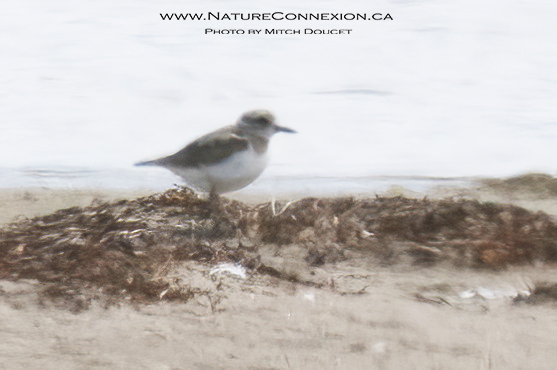
#343 – Wilson’s Plover
Rare in the province, local on sandy beaches and drier sandflats or mudflats unusually well away from the water’s edge.



